2 1 9


2 1 9

FEDS’ RABIH BOU RACHED TALKS TO BPME ABOUT DRONE TECHNOLOGY, APPLICATIONS IN THE BUILT ENVIRONMENT, AND ADVANCEMENTS THAT COULD SPAWN NEW USE CASES






Welcome to an all-new issue of Big Project Middle East (BPME), dear readers. I’m sure the eagleeyed amongst you have noticed that the magazine has a new size, a higher page count and, crucially, a sharper new look.
At BPME we pride ourselves on highlighting current trends and issues, and during the height of summer, the team and I decided it was time to give the magazine a fresh new look, whilst maintaining its focus on quality content. This redesign has been months in the making, driven by our talented Art Director Simon Cobon who has decades of design experience under his belt, so I’m confident it’ll be to your liking. If you'd like to share your thoughts on the redesign with me, please do so via email or in person at one of our many upcoming events.
Speaking of which, by the time you read this, we’ll be just a few weeks away from the 2024 edition of the Digital Construction Summit. This conference is one of my personal
favourites, and I’m pleased to say this year’s event is shaping up to be one of the biggest in the event’s history.
We’ve got a brilliant line-up of speakers who will be speaking on topics such as using technology to enhance construction quality, future cities and the technology that drives them, using technology such as AI responsibly, and how professionals can continue to thrive as the industry adopts more and more technology.
You can also look forward to engaging with a multitude of exhibitors, showcasing the latest in cutting edge software and hardware. If you haven’t done so already, please visit https://2024. digitalconstructionsummit.com/ and register to secure your seat, as spaces are extremely limited. See you then!

Jason Saundalkar HEAD OF CONTENT
08 The Briefing
ALEC'S 2023 ESG report highlights notable progress towards sustainable operations and employee wellbeing
14 The Big Picture
A wrap-up of the biggest international construction news stories for the month
16 Market Report
Knight Frank shares insights into trends and the residential performance of key cities in KSA
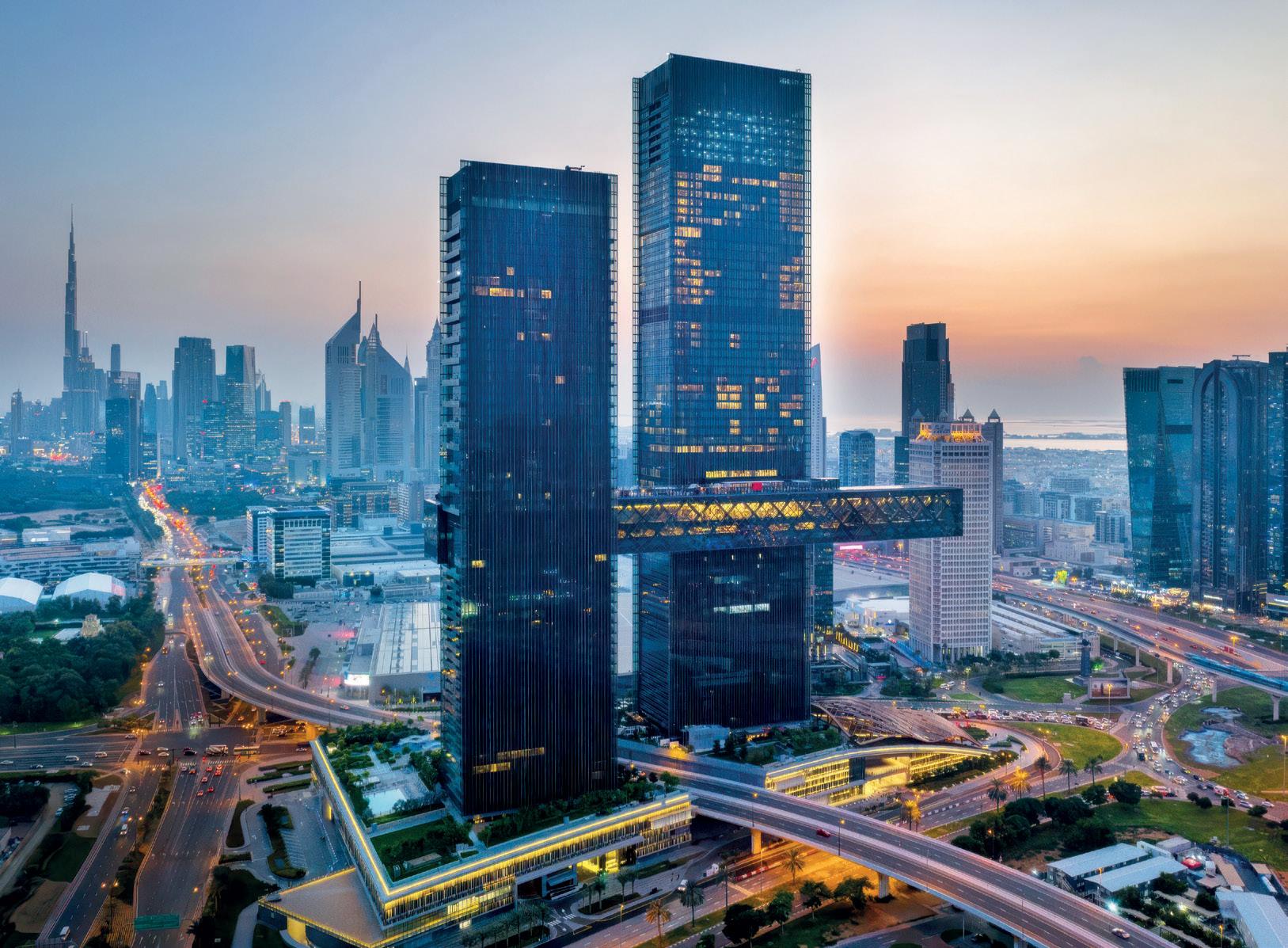


36 Interview
Raising the Bar on Waterfront Living
Priyanka Raina speaks to Hamad Al Abbar, Managing Partner of LMD and Sean McCauley, CEO of Devmark about The Pier Residence, their partnership and the real estate sector in the UAE
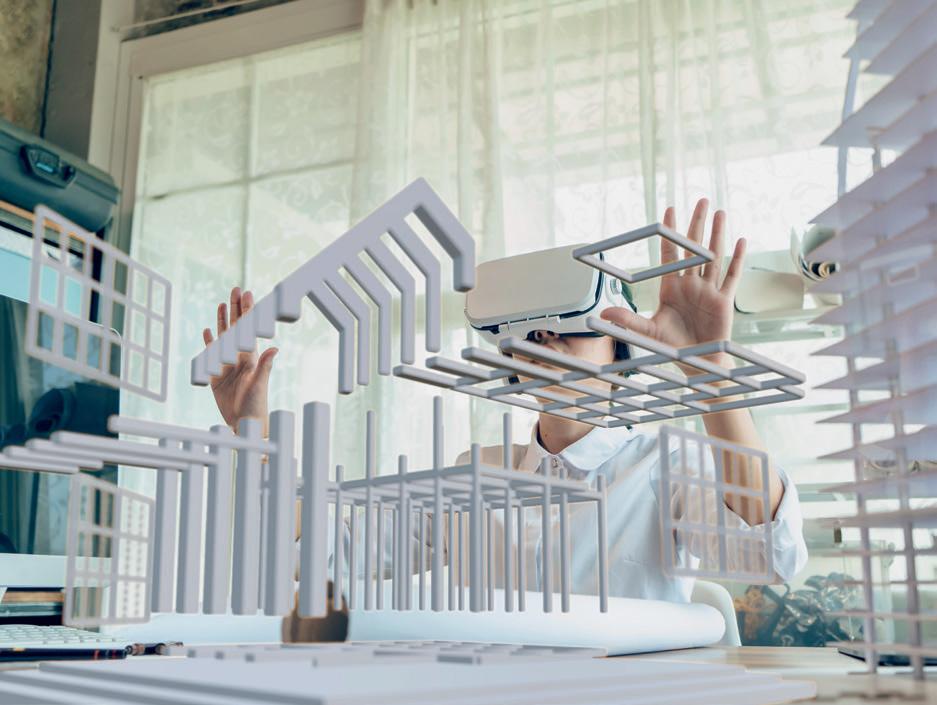

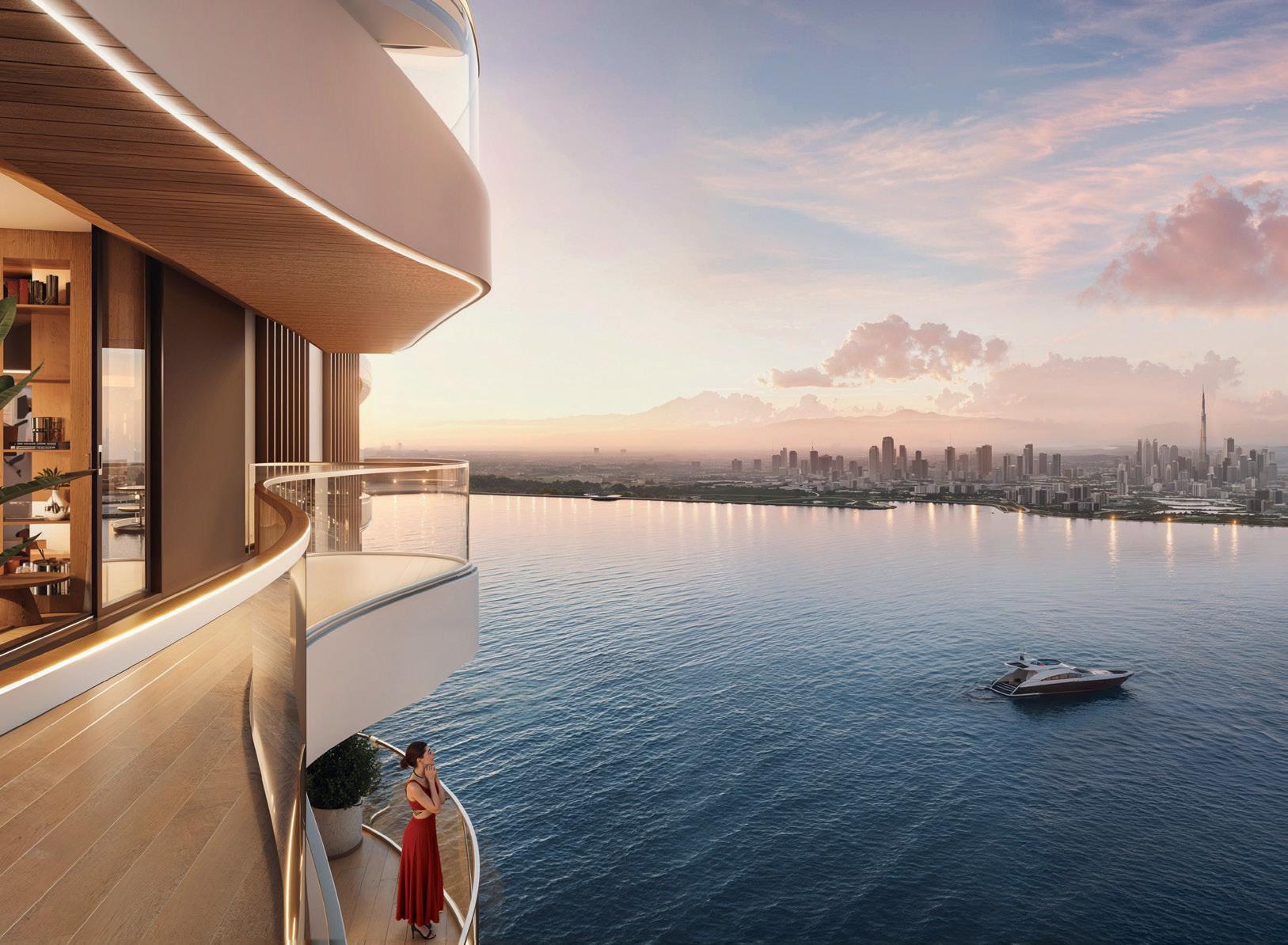
44 Comment
Omnix International’s Walid Gomaa on how adopting digital twins can transform the AEC industry
50 Comment
Trimble’s Paul Wallett highlights how architects and engineers can create better structure designs that lead to better outcomes
56 Final Update
Iman Developers begins handovers of Oxford Terraces in Dubai's Jumeirah Village Circle
GROUP
MANAGING DIRECTOR Raz Islam
DIRECTOR OF FINANCE & BUSINESS OPERATIONS Shiyas Kareem
PUBLISHING DIRECTOR Andy Pitois
EDITORIAL
HEAD OF CONTENT Jason Saundalkar
EDITORIAL ASSISTANT Priyanka Raina
ADVERTISING
SALES DIRECTOR Arif Bari
STUDIO
ART DIRECTOR Simon Cobon
DESIGNER Percival Manalaysay
PHOTOGRAPHY
PHOTOGRAPHER Maksym Poriechkin
CIRCULATION & PRODUCTION
DATA & PRODUCTION MANAGER Phinson Mathew George
MARKETING
SOCIAL MEDIA EXECUTIVE Franzil Dias
WEB DEVELOPMENT
WEB DEVELOPER Abdul Baeis
WEB DEVELOPER Umair Khan
FOUNDER Dominic De Sousa (1959-2015)
raz.islam@cpitrademedia.com shiyas.kareem@cpitrademedia.com andy.pitois@cpitrademedia.com
jason.s@cpitrademedia.com priyanka.raina@cpitrademedia.com
arif.bari@cpitrademedia.com
simon.cobon@cpitrademedia.com percival.manalaysay@cpitrademedia.com
maksym.poriechkin@cpitrademedia.com
phinson.george@cpitrademedia.com
franzil.dias@cpitrademedia.com
abdul.baeis@cpitrademedia.com umair.khan@cpitrademedia.com
The publisher of this magazine has made every effort to ensure the content is accurate on the date of publication. The opinions and views expressed in the articles do not necessarily reflect the publisher and editor. The published material, adverts, editorials and all other content are published in good faith. No part of this publication or any part of the contents thereof may be reproduced, stored or transmitted in any form without the permission of the publisher in writing.
cpitrademedia.com © Copyright 2024. All rights reserved.


Sobha Realty complete US $230mn Sukuk Tap
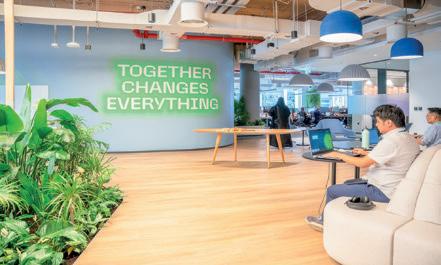
AtkinsRéalis opens new office in
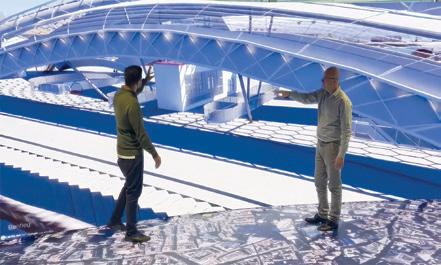
Bentley Systems acquires 3D Geospatial company Cesium
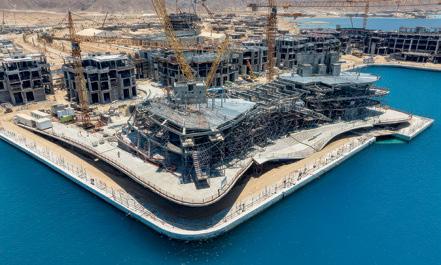

Two new bridges open on Al
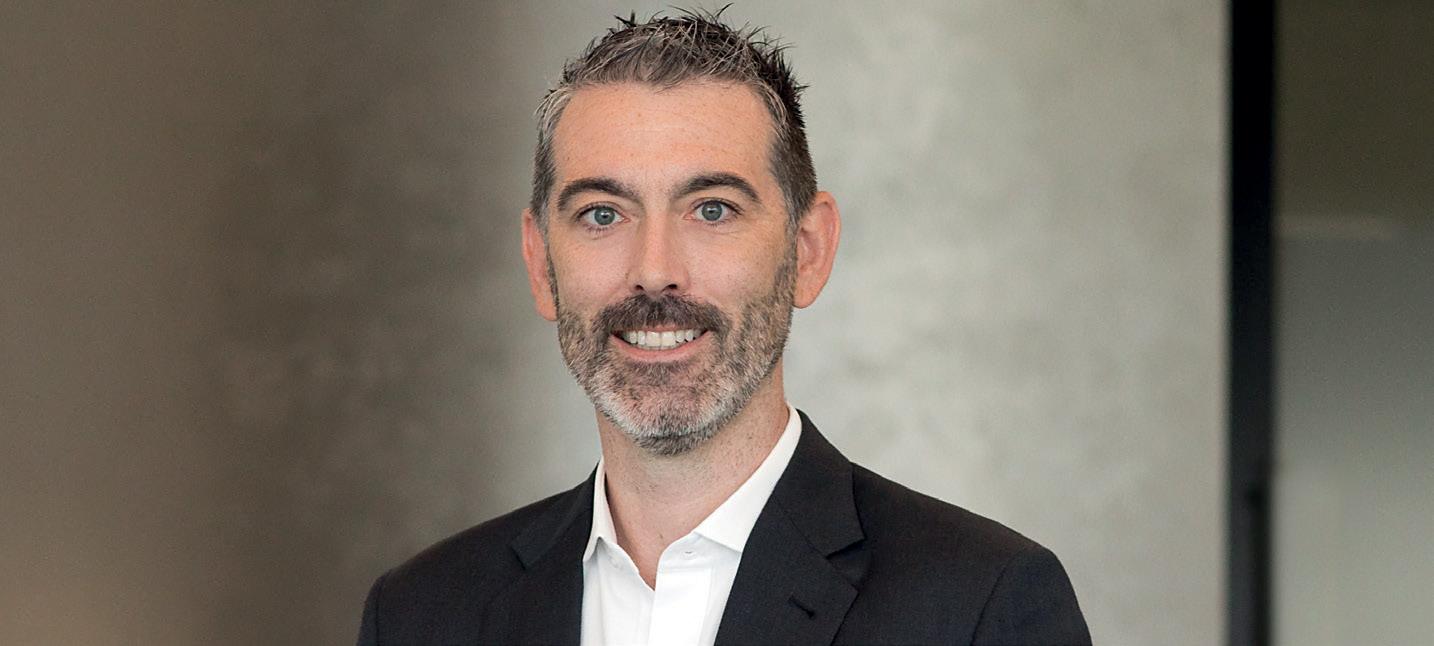
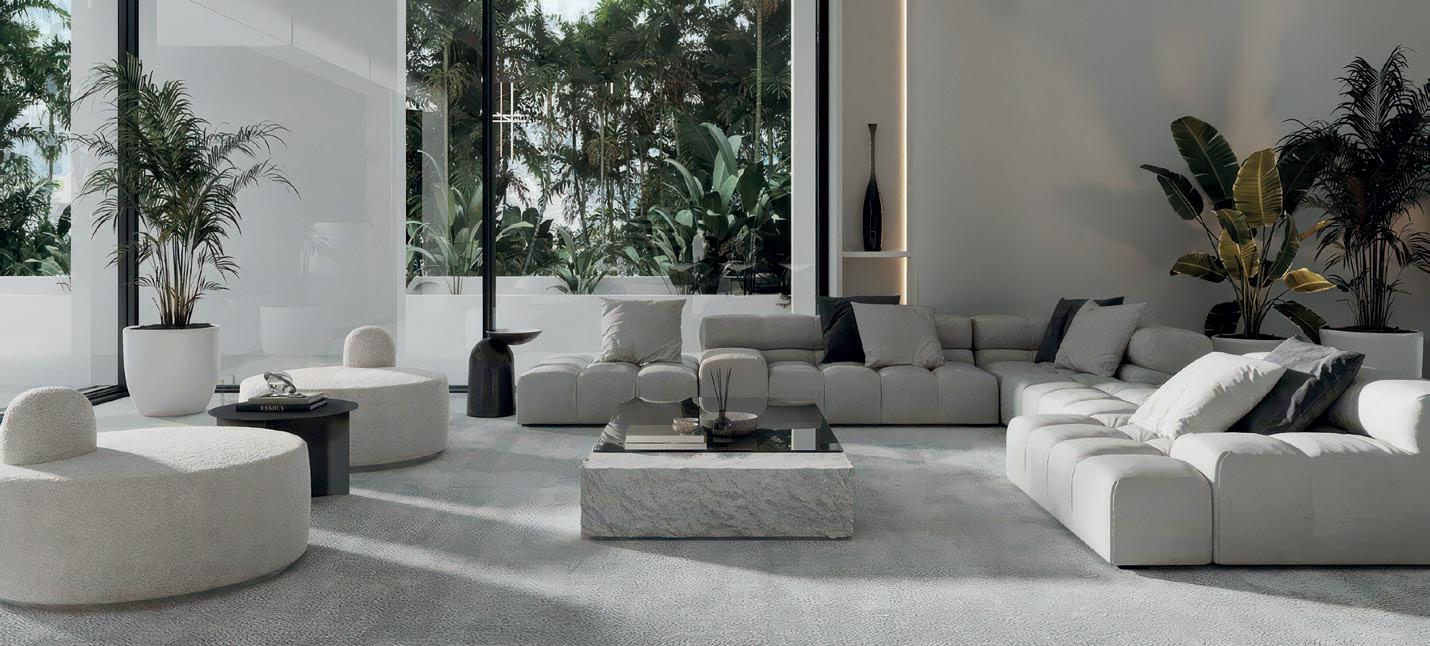
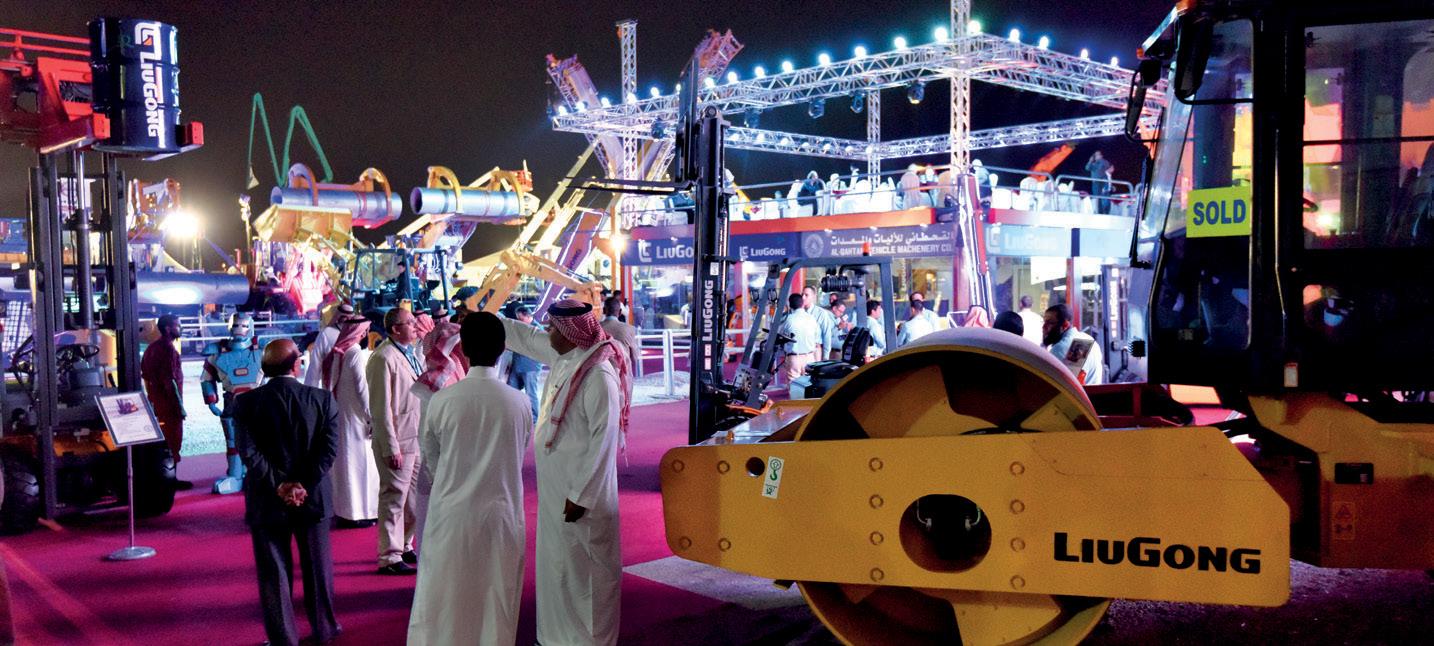

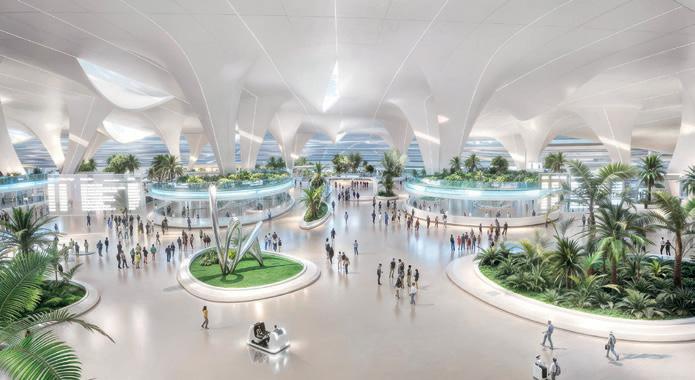
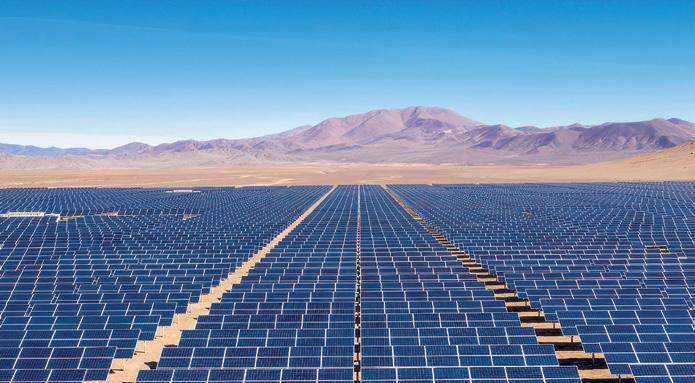
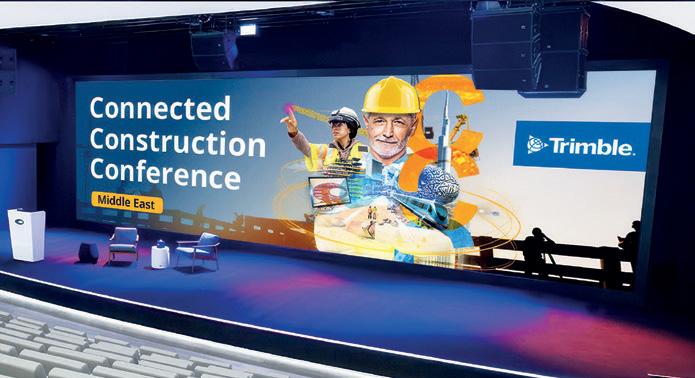
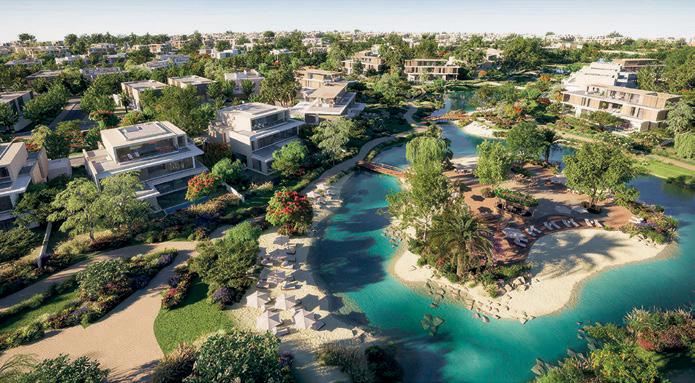
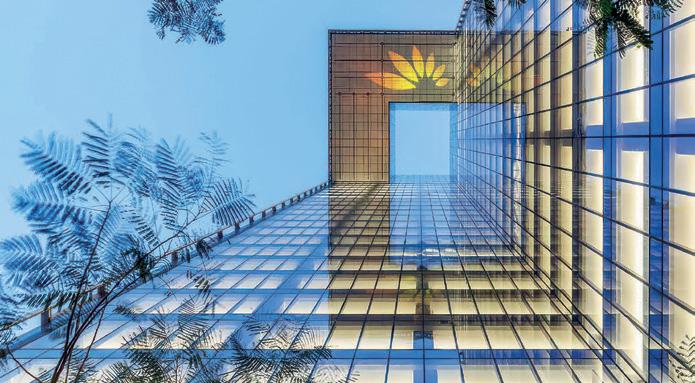
INFRASTRUCTURE
Design revealed for Al Maktoum International Airport
The project is expected to begin the planning phase in 2024, with Phase I due to be delivered by 2032
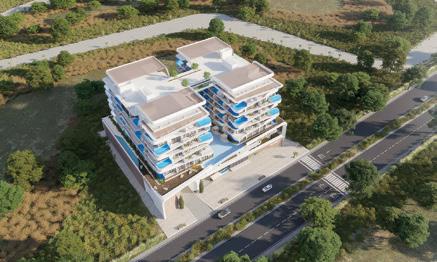
ENERGY
New solar ‘mega project’ announced for Qatar
The new project will boost Qatar’s PV solar power production capacity to about 4,000MW
INDUSTRY
Trimble to host Connected Construction Conference
Some of the key topics include: data management in construction; future trends and emerging technologies; connected construction, and resilience and adaption challenges
PROPERTY
Meraas showpiece releases 200 new villas
Meraas is committed to achieving LEED Community certification for The Acres and the community is designed with this aspiration in mind
SUSTAINABILITY
JLL and Mashreq partner for LEED Zero Carbon status
The building’s Net Zero carbon status was realised through carbon emissions avoided or offset from the building’s annual operational energy and occupant transportation over a year

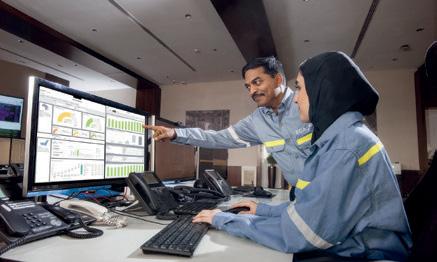
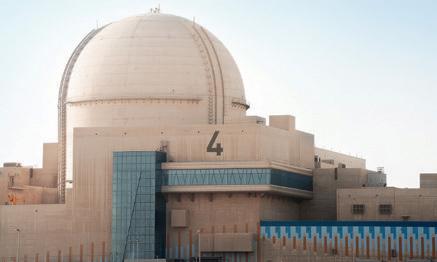

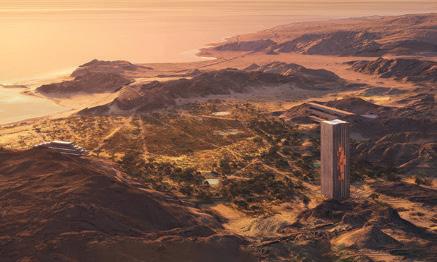
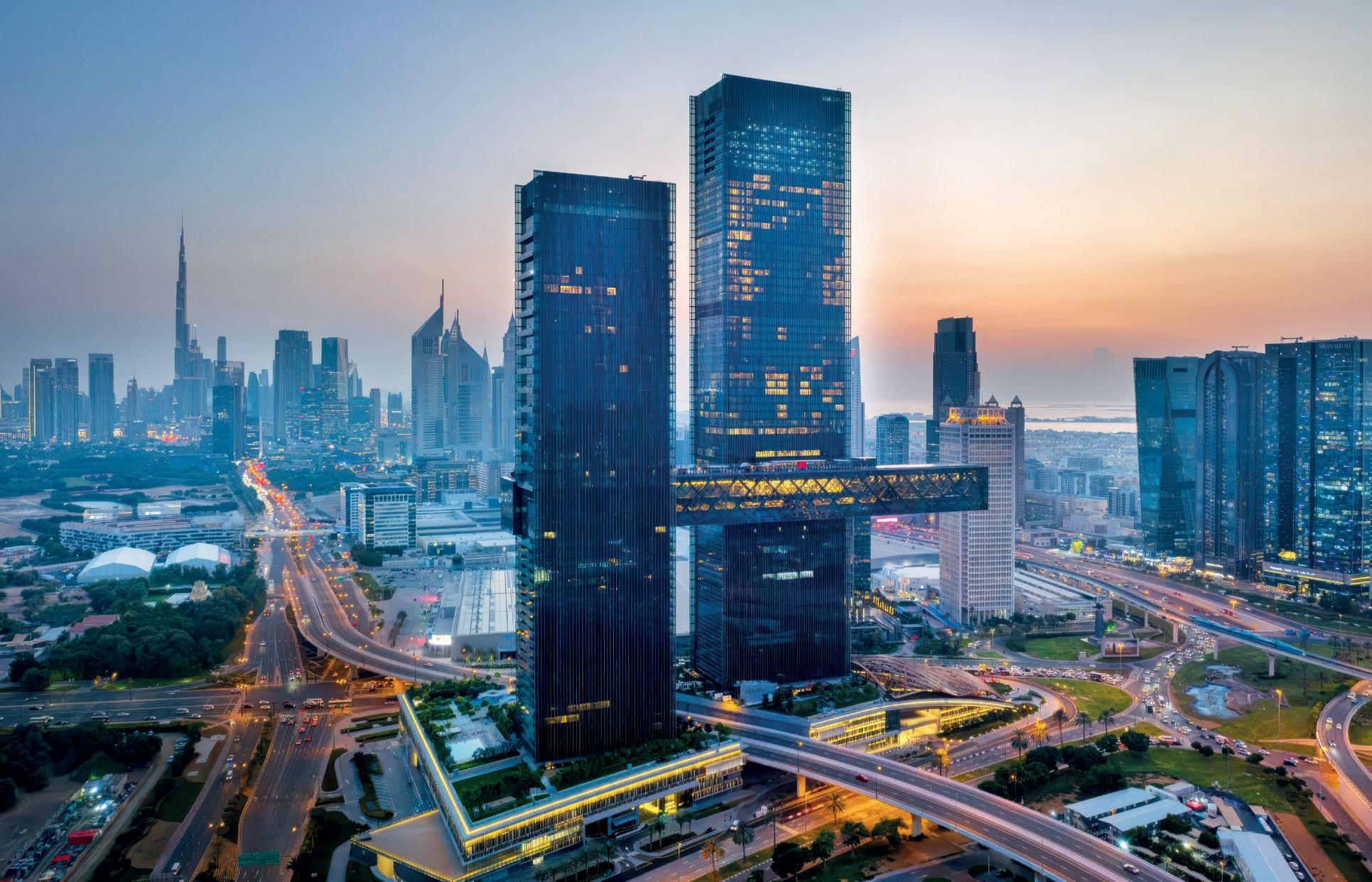
One of the group’s key environmental initiatives across UAE operations in 2023 was its investment in solar energy
ALEC has released its 2023 ESG report and has tracked significant progress in sustainable operations and upskilling and enhancing employee wellbeing, the firm explained.
"2023 marked a pivotal year for sustainability in the Middle East, highlighted by the UAE’s hosting of COP28, the annual United Nations (UN) Climate Change Conference, and the extension of the Year of Sustainability
to include 2024 as well as the GCC Exchanges Committee’s unified ESG Disclosure Metrics, all with the aim of encouraging sustainable practices and collective action. While our dedication to sustainable and socially responsible operations has always been a cornerstone of our strategy, these commendable government actions have further galvanised our efforts,” said Barry Lewis, CEO at ALEC.
One of the group’s key environmental initiatives across UAE operations in 2023 was its investment in solar energy, with a cumulative installed capacity of 3.024MWp across its facilities. The company said it had plans to increase this further in 2024, and noted that it has also deployed solar-diesel hybrid generators across three of its main construction sites in the UAE to reduce diesel consumption. Through substantial investment and innovation, ALEC continued to lead the way towards a greener future for the regional construction industry. In 2023, LINQ delivered more than 500 modular units, supported by ALEMCO’s modular MEP arm, and manufactured at its facility in Dubai Industrial City, for projects across the GCC. LINQ had received a structural system approval from Dubai Municipality for the city’s first multi-storey (G+6) modular volumetric building system, a statement from ALEC highlighted.
In 2023, the group signed the UAE Real Estate Climate Pledge in collaboration with the UAE Ministry of Climate Change and Environment, in support of the UAE’s Net Zero Vision. As a significant player in the built environment, the firm said it aims to elevate the entire sector and has worked to enable its clients and industry peers to operate more sustainably. AJI Rentals, the group’s equipmentleasing business, made considerable investments that now enable its clients to opt for lithium-powered mini-cranes, solar-diesel hybrid generators, and diesel-free battery energy storage and supply systems. Over the years, eight projects that the group delivered successfully achieved LEED certifications. In the UAE, three projects delivered by the group were awarded Pearl 2 Estidama Rating, with an additional three on track to soon receive their Pearl 2 Estidama ratings, it highlighted.
As a participant of the United Nations Global Compact, ALEC said it is working on enhancing its commitment to integrate principles of human rights, labour rights, environmental protection and anticorruption into its business, and reports publicly on its progress.
The firm's focus on learning and development resulted in 3,082 workers being upskilled, 31 of whom were then promoted to staff positions. The firm's Community Impact initiatives have also positively affected the lives of more than 12,000 beneficiaries, reflecting the value it places on social responsibility, said the statement.
KEY FOCUSES
ALEC has a significant focus on learning and development, and environmental initiatives, the latter of which included an investment into solar energy.

The new development highlights the developer’s commitment to creating living spaces that combine sophistication with tranquility
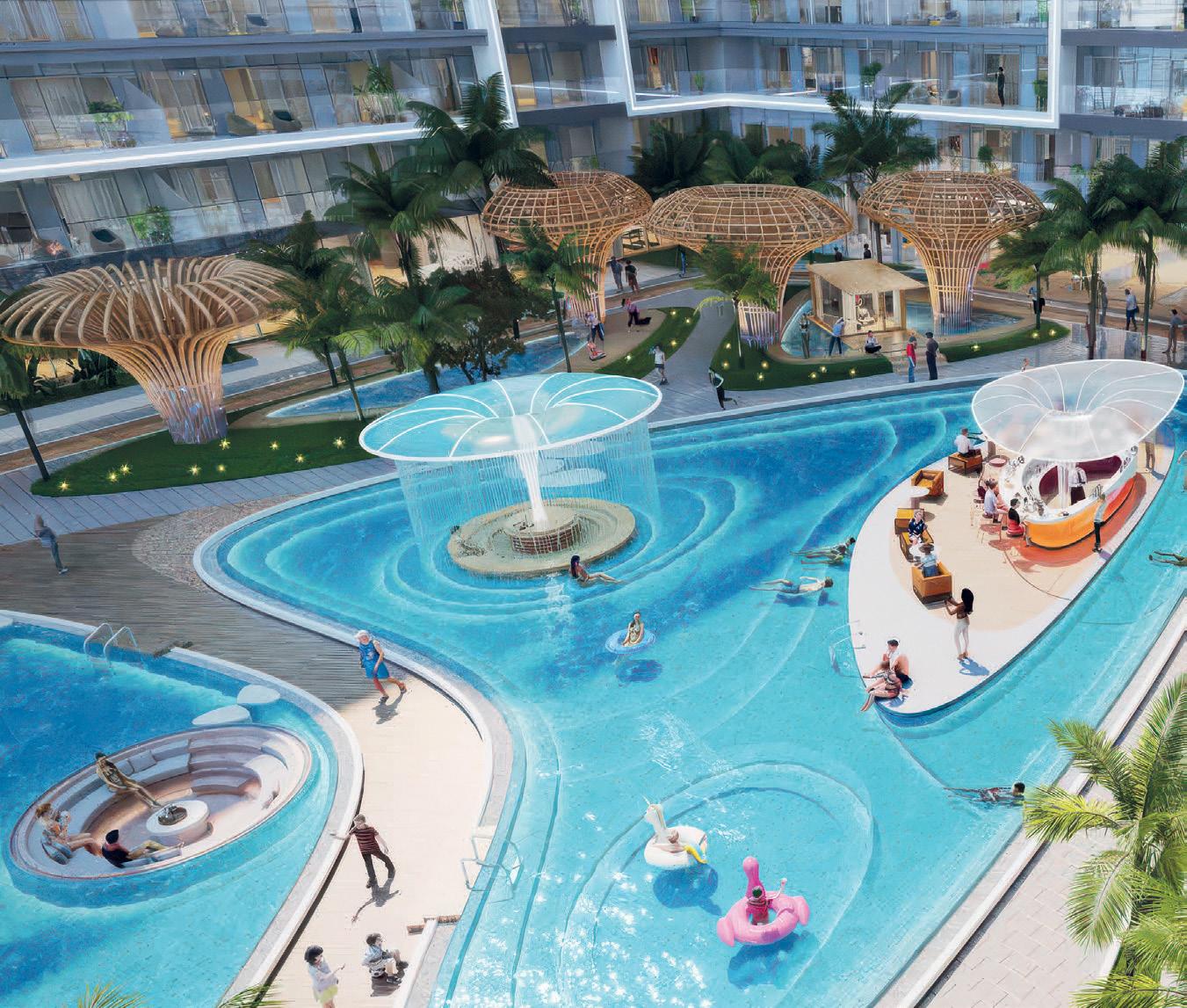


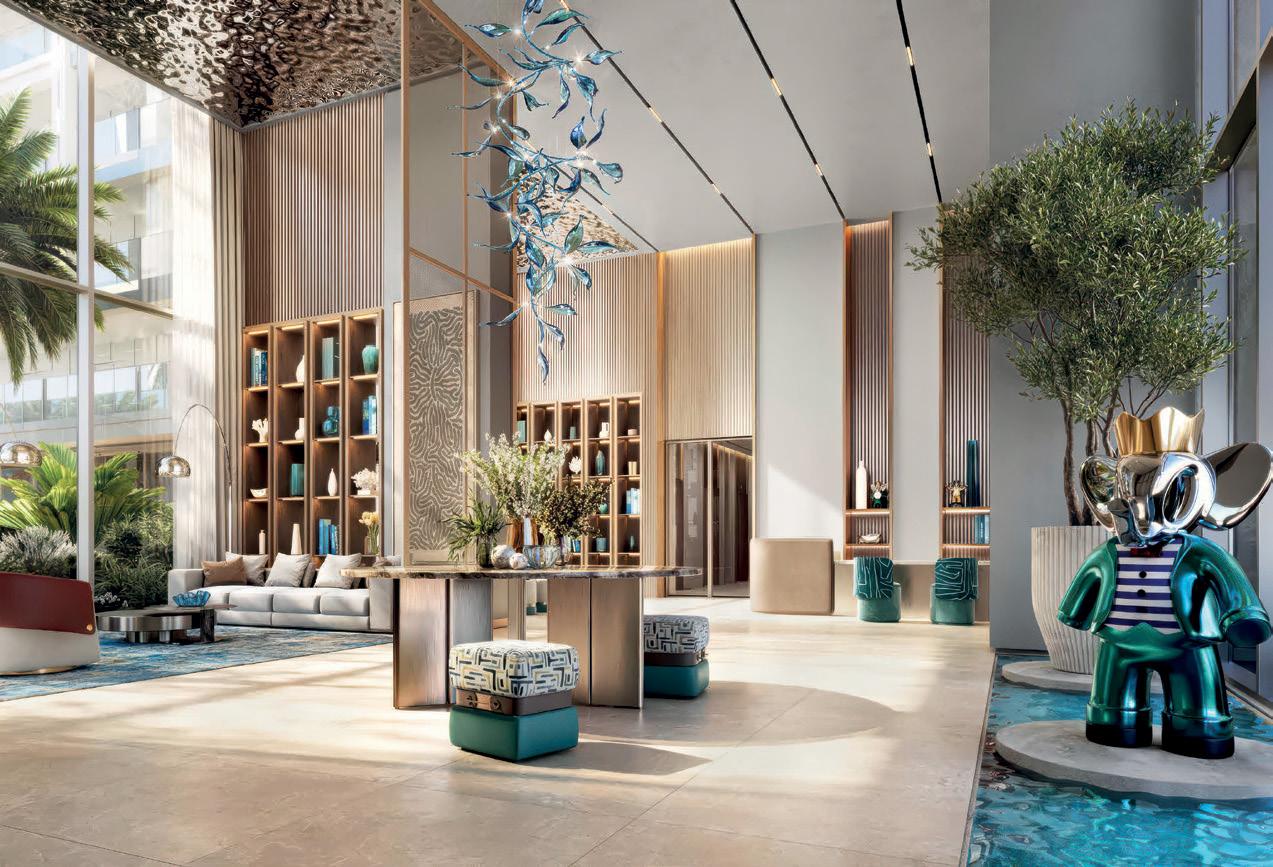
Developer DAMAC Properties has announced the launch of its inaugural project in Ras Al Khaimah; the Shoreline by DAMAC is located on the shores of Al Marjan Island. The 17-storey beachside residence will feature one-, two- and three-bedroom units and duplexes, the developer said.
The beachfront residence is being designed in collaboration with contemporary art icon Vincent Faudemer's collection, BABOLEX, and aims to bring a harmonious blend of funky and chic detailing to create a modern aesthetic with comfortable living for residents. Shoreline by DAMAC marks the developer’s second collaboration with BABOLEX.
The new development highlights the developer’s commitment to creating living spaces that combine sophistication with tranquillity.
Situated on Island 4 on Al Marjan Island, it will offer a five-star resort experience, featuring direct access to a beach. The Shoreline is designed to offer residents unobstructed views of the Arabian Gulf, complemented by amenities such as landscaped gardens, fitness centres, running tracks, swimming pools, wellness areas, a sunset bar and floating cabana, it added.
"We are thrilled to bring our expertise and commitment to unparalleled luxury and excellence to Ras Al Khaimah, an emirate that is fast emerging as a premier destination for residents, holiday homeowners, and investors alike. Shoreline by DAMAC is more than just a residential development,” said Mohammed Tahaineh, General Manager of Projects at DAMAC.
The new development highlights the developer’s commitment to creating living spaces that combine sophistication with tranquillity.
DAMAC Properties’ expansion into Ras Al Khaimah aligns with the emirate’s rapid rise as a leading destination for expatriates and home investors. According to the 2023 Expat City Ranking, Ras Al Khaimah is now recognised as the world’s fourth-best city for expatriates to live and work. The government’s supportive initiatives, regulations, and residency eligibility have fuelled demand for properties, particularly apartments, making the city increasingly attractive to investors and those seeking holiday homes amidst its natural beauty.
master developer
Arada has announced its first expansion outside the UAE market with the launch of operations in Australia. The Dubai-based developer has set up a new office in the Sydney suburb of Pyrmont and is planning multiple projects in Australia. Arada’s extended pipeline of projects will contribute towards urban renewal required to address the current housing shortage in Sydney.
Adding over 2,500 homes to the Sydney housing market, sales and construction for Arada’s initial projects will begin in 2025. With significant land holdings, the sites will deliver commercial and retail components. Arada has partnered with architecture firm Woods Bagot to design and deliver its vision to the Australian market, the firm noted in a statement. SEPTEMBER-OCTOBER
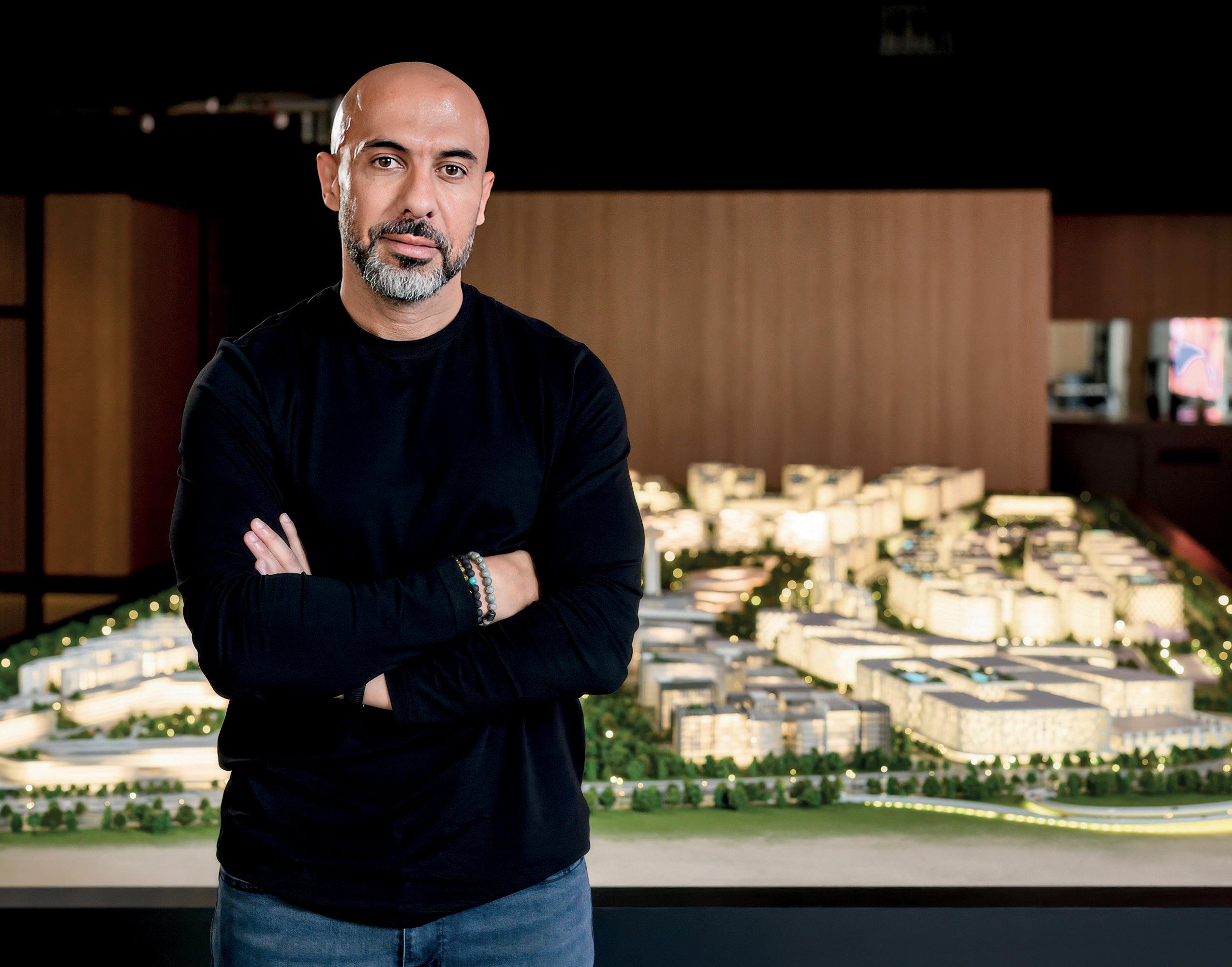
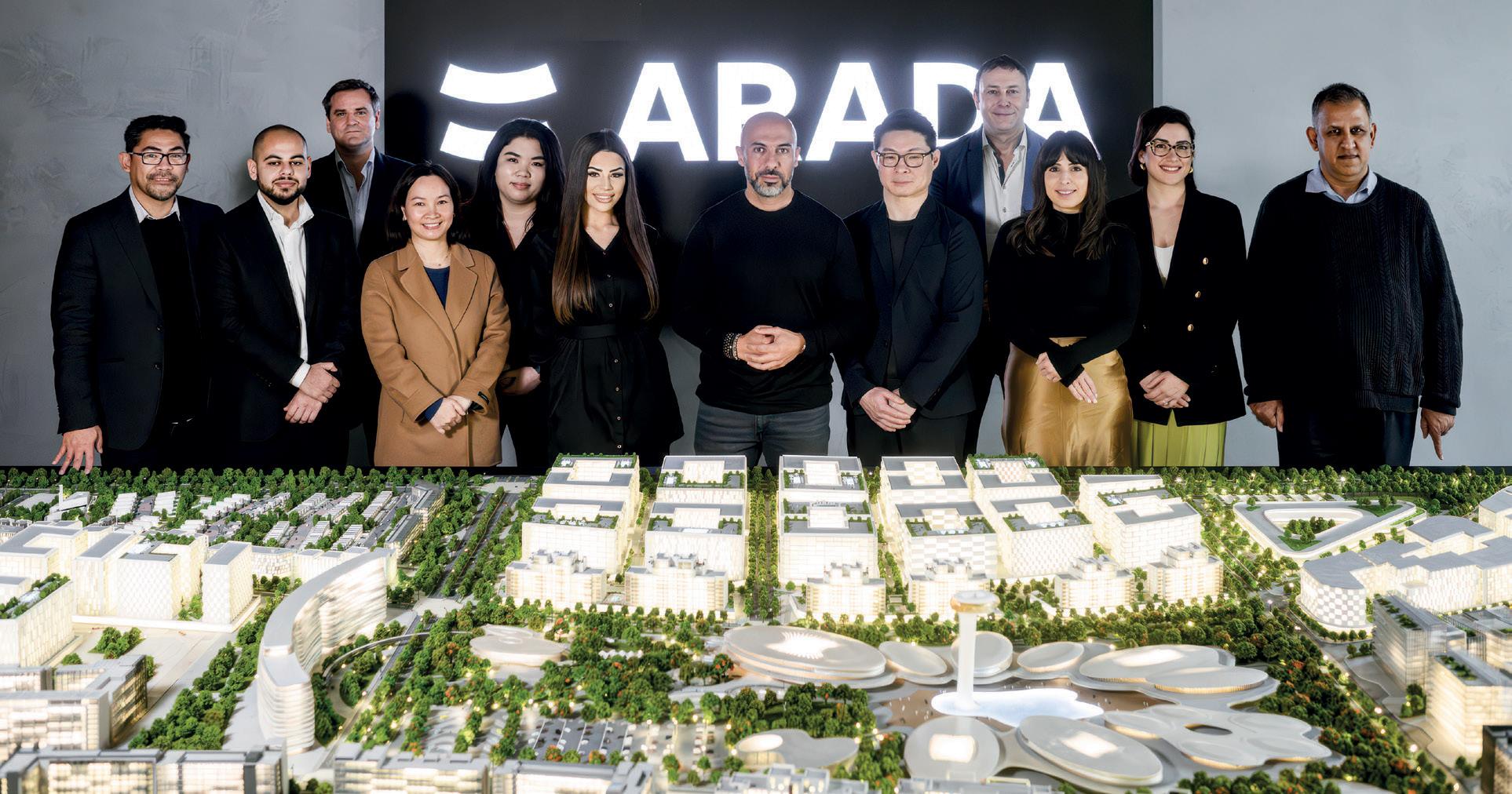
POSITIVE GROWTH
Since its launch in 2017, Arada has launched six projects in Sharjah and Dubai, with a claimed combined sales value of $16.3bn.
Arada has been led by its Australian-born Group Chief Executive Officer, Ahmed Alkhoshaibi, who is also spearheading the Australian operations and business growth.
Alkhoshaibi remarked, “Launching in Australia marks a pivotal moment for Arada as we continue to realise our vision of integrated residential communities that help people lead happier, healthier and more meaningful lives. Arada is passionate about delivering activated precincts that deliver a community-based approach to housing supply.”
“Our initial projects in Sydney are strategically located within growth corridors, aligning with local government initiatives to expand housing near transport hubs and minimizing strain on existing infrastructure. With a strong financial position, an impressive track record and a dedicated local team, we are poised to make a positive impact on our future residents and the communities we serve,” Alkhoshaibi added.
In Australia, Arada will continue to deliver diverse housing options with facilities and amenities, alongside events and activations for residents and their friends to enjoy in the surrounding area. Its developments will feature green spaces, retail outlets and Arada’s own fitness and wellbeing offering, Wellfit, which focuses on providing active, healthy living for the whole family via state-of-theart facilities, the developer said.
Since its launch in 2017, Arada has launched six projects in Sharjah and Dubai, with a claimed combined sales value of $16.3bn. These include Sharjah’s largest ever mixed-use megaproject, Aljada; the UAE’s first forested community, Masaar; and the ultra-luxury Armani Beach Residences at Palm Jumeirah. In 2023, Arada announced a 100% increase in the total value of property sold to $1.9bn compared to the previous year. In total, Arada has sold 14,000 units since inception, valued at over $4.62bn, with over 9,000 units completed, the developer said in its statement. The UAE-based developer was founded by HH Sheikh Sultan bin Ahmed Al Qasimi, Chairman of Basma Group, and HRH Prince Khaled bin Alwaleed bin Talal, founding Chairman of KBW Investments, with the intention of delivering superior properties to the UAE real estate segment.
AD Ports Group has announced the completion of the acquisition of Tbilisi Dry Port. The group is now the majority stakeholder with a 60% stake.
The new hub is positioned between the Caspian Sea and Black Sea, it integrates multiple facilities including a container freight station, warehouses and a car storage park. Serving as a crucial point of entry, exit, and regional transit, it accommodates manufactures, shippers and consignees moving containers, vehicles and various goods for distribution and storage.
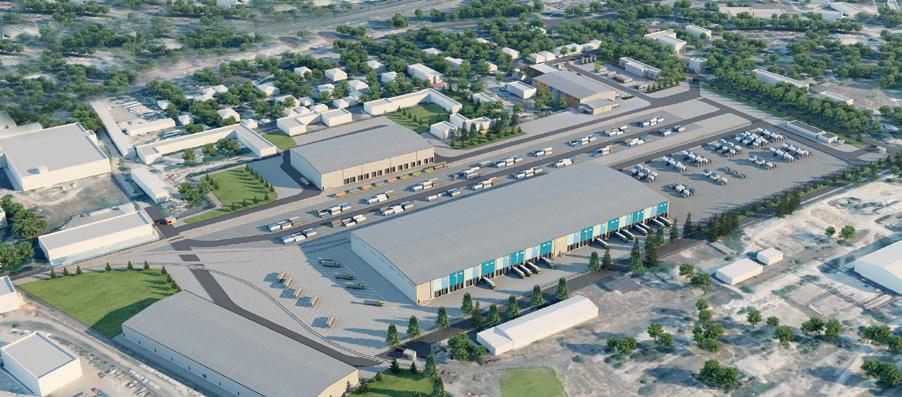
Ethiopian Airlines Group has announced plans to build Africa’s largest airport in Abusera a critical element of the airline's 15-year plan to become one of the most competitive aviation groups in the world.
The airport’s location allows the airline to meet the International Air Transport Association’s forecasts of more growth over the next decade. Growing beyond Bole International Airport, Abusera’s lower altitude will elevate aircraft take-off performance, while an express rail link to Addis Ababa facilitates connectivity.
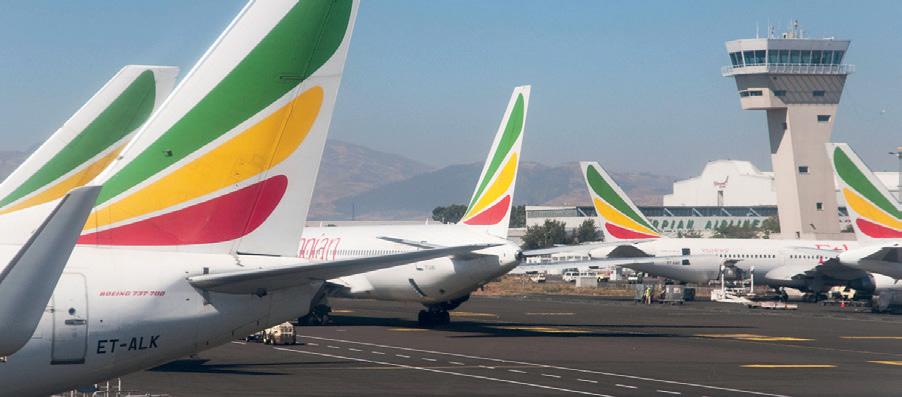
AMEA Power has broken ground on a 24MWp Solar Photovoltaic (PV) project in Uganda. The project is being implemented by Ituka West Nile Uganda Limited. The project includes a 1X24 MVA 33/132kV transformer substation/switchyard and will be evacuated through the newly constructed Lira-GuluNebbi-Arua 132kV transmission line, operated by UETCL, the offtaker. Once commissioned, it will be the first and largest utility-scale grid-connected solar PV project in the West Nile Region.

Abu Dhabi Sustainable Water Solutions Company (SWS), Marubeni Corporation, and Suez have signed a joint development agreement with the Ministry of Investment, Industry and of Uzbekistan, and Uzsuvtaminot JSC for the development of a wastewater treatment plant in Tashkent, Uzbekistan. The project, which will be capable of producing 1.5m cu/m of treated water per day, is the largest of its kind in Uzbekistan and the wider Commonwealth of Independent States (CIS).

Work is underway on the initial design of a railway project linking Kuwait and Saudi Arabia, aimed at providing a direct link for transporting passengers and commercial goods.
The move comes following the go-ahead from The Project Management Committee of Kuwait and Saudi Arabia, based on the outcomes of their financial, economic, technical, and social feasibility studies. International companies will be invited to submit tenders, pending the release of the project RFPs.

An investor has been secured by the provincial government of Bali, Indonesia for a US $20bn subway project. The new system of trains is meant to reduce congestion on existing road infrastructure.
The infrastructure development’s project manager PT Sarana Bali Dwipa Jaya (SBDJ) notes that construction is expected to start in September. The scheme will run through four phases and introduce an underground rail network between Bali’s I Gusti Ngurah Rai International airport and the country’s popular tourist destinations.
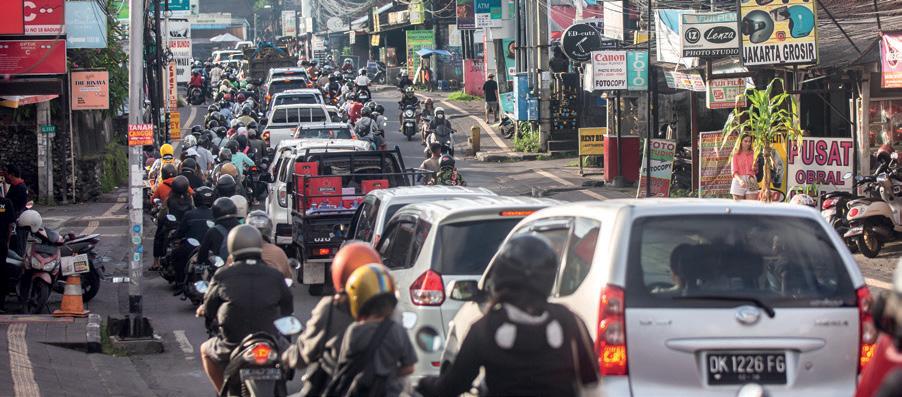
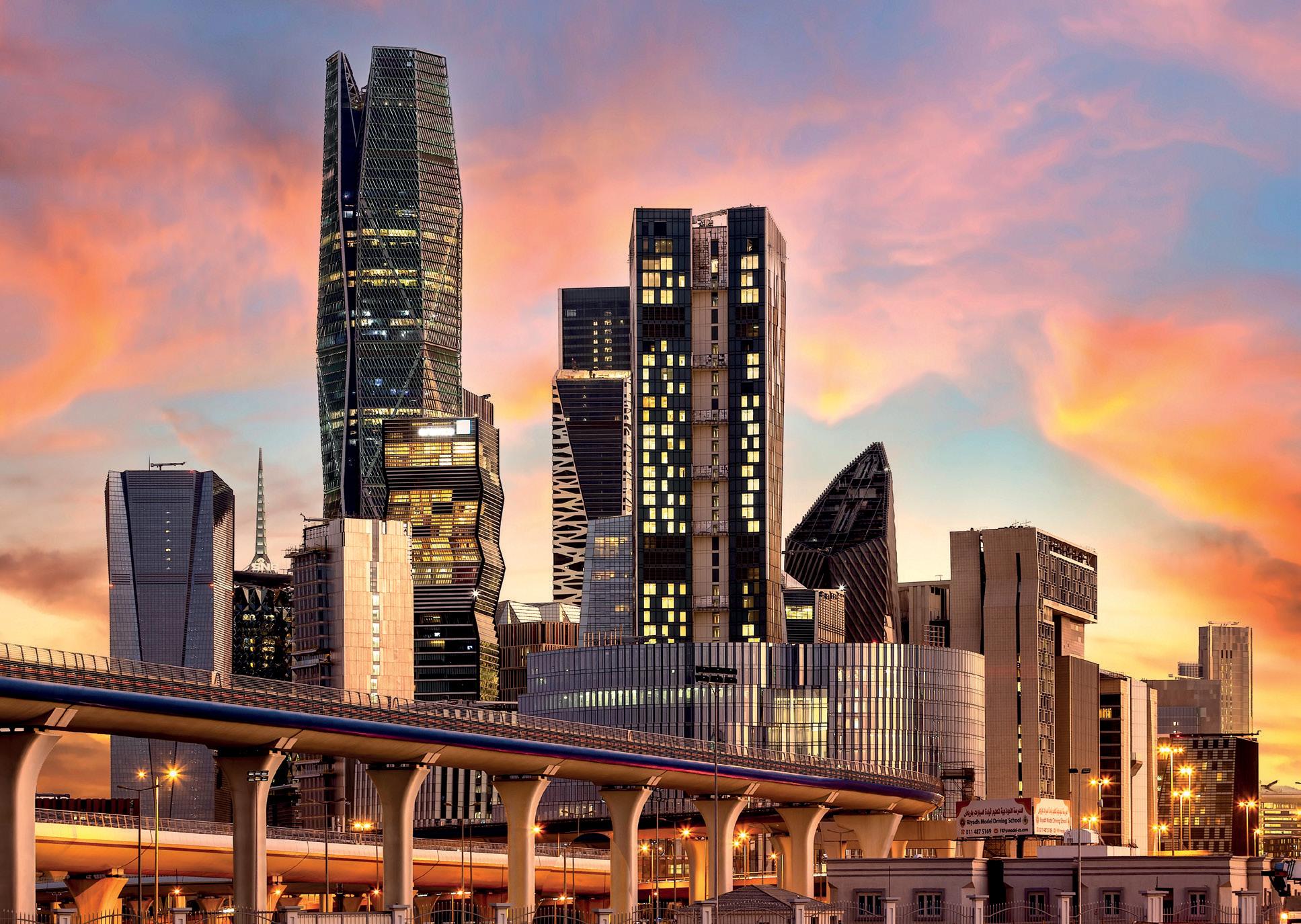
Knight Frank shares insights into trends and the residential performance of key cities in Saudi Arabia during the first half of 2024
During H1 2024, the total number of real estate transactions across all asset classes in Saudi Arabia surged by 38% to just over 106,700, while the total value of all deals grew by 50% to $33.9bn over the same period.
Residential transactions, which actually accounted for 61% of all real estate deals by total value in the Kingdom, registered a 41% increase in the number of deals to just under 91,860 sales. While the value of
residential transactions increased by 48% to $20.7bn over the same period.
A combination of factors has underpinned the growth in residential real estate transactions in Saudi Arabia.
In 2023, over 96,000 families benefited from the Kingdom’s Housing Program which helps to facilitate access to affordable home financing solutions.
In addition, more than 20,000 families were assisted through homeownership tracks via the Development Housing
Program, which offers eligible families and those who need usufruct rights on homes donated through the government’s housing Support Portal.
Government initiatives aimed at boosting housing supply and affordability have also been instrumental in driving up sales activity this year. The government has launched multiple housing projects, for in-stance, under the Sakani and Wafi programs to boost homeownership among nationals, with these efforts now extending to secondary and tertiary cities across the country. By the end of 2023, the percentage of Saudi homeowners had reached 63.74%, a 16.7% point increase on 2016, when the National Transformation Plan was unveiled and also ahead of the government’s 2023 target of 63% (MOMRAH).
The government has also been actively partnering with private sector players to expedite the construction of new homes, in an effort to address a longstanding shortage of suitable high-quality supply. The National Housing Company (NHC) has, for instance, signed an agreement with China State Construction Engineering
Corporation (CSCEC) to build 20,000 housing units in suburbs and communities developed by NHC across various regions of the Kingdom.
The total number of mortgages issued for home ownership between January-May 2024 increased by 6.7%, compared to a decline of 35% over the same period last year. In parallel, the total value of mortgages issued increased by 3.9% to $9.7bn during the same period.
Initiatives such as the establishment of the Saudi Mortgage Guarantees Services Company, or Dhamanat, which is a governmentbacked mortgage guarantee service, is in large part driving the surge in home financing levels for citizens. In July 2024, the government also launched the first Dhamanat for off-plan sales, licensed by the Insurance Authority, which is expected to pave the way for access to projects still being developed.
Separately, the introduction of regulations allowing foreign investors to own property in Saudi Arabia through new Premium Residency Visa options unveiled in January has also
opened the market to international buyers, further driving demand.
Among the new Premium Residency Visa options, one that particularly stands out is the visa linked to owning real estate property or properties worth over $1.07mn. This initiative marks a pivotal shift in the Kingdom’s approach to residency and property ownership by non-Saudis and will have substantial implications for the demand dynamics of the residential market as it effectively, for the first time, permits non-resident international buyers access to the market as end users or investors.
This Premium Residency visa allows individuals to gain permanent residency status, which not only permits them to reside in the Kingdom but also to engage in business activities and own additional real estate.
Furthermore, the threshold of $1.07mn is set to ensure that the investments are significant, likely leading to an influx of high-value transactions in the real estate market. This could increase the demand for luxury and high-end residential properties, driving up values in these segments over the medium-term.
Riyadh Riyadh continues to stand out among Saudi Arabia’s major cities, supported by various government initiatives aimed at boosting the city’s economic and cultural status, as well as its entertainment offerings. Initiatives such as Programme HQ also continues to drive residential demand in the capital from those being recruited into expanding businesses, or those relocating their regional HQs to Riyadh.
Indeed, over the last 12 months, residential transaction volumes in Riyadh rose by 49%, compared to 27% in Jeddah, 29% in DMA,
and 21% in Madinah. Makkah was the only city where transaction volumes declined by 6%.
The capital’s growing population, coupled with increasing urban migration and ongoing government housing initiatives to achieve 70% homeownership by the end of the decade, is also driving increased demand for housing. Despite the surge in transaction volumes, the total value of residential transactions in Riyadh rose by a more modest rate of 8% year-on-year to $3.8bn, hinting at a rapid tapering of the strong price growth registered over the last two to three years and
pointing to affordability challenges in some segments of the market.
While average apartment prices hit a new record at $1,417psm, equating to an 8% year-on-year increase, this masks the 3% rise registered during Q2. It is worth noting that price increases have not been uniform across the capital, with factors such as demand, location, infrastructure, and the quality of local services and amenities having an impact on price performance.
The northern part of Riyadh, for instance, has emerged as the epicentre of demand, with the highest price growth. Average apartment
RIYADH - RESIDENTIAL SUPPLY EXISTING SUPPLY UPCOMING SUPPLY 1,600,000 1,400,000 1,200,000 1,000,000
prices in Hiteen surged by 24% to $2,308 psm over the last 12 months. Similarly, Al Malqa and Al Yasmeen have experienced price increases of 17% and 14% respectively.
In contrast, in some southern districts of Riyadh, often regarded as a more affordable location, average apartment prices have dipped. Specifically, in Al Shifa (-5%) and Dhal Al Baida (-9%), prices dropped to $906 psm and $692 psm, respectively, over the same period.
Average villa prices increased by 7.9% year-on-year to $1,373 psm. Notably, the northern districts of the capital experienced the
most significant growth, with Al Malqa (21%) and Hittin (16%) seeing price climb to $2,661 psm and $2,635 psm, respectively.
Conversely, villa prices in the southern districts have declined, with Al Uraijah experiencing a 9% de-crease and Al Swaidi a 3% drop over the last 12 months.
From a supply perspective, the Ministry of Housing remains focused on increasing affordable housing options to address rising demand and support the government’s goal of achieving a 70% homeownership rate by 2030. The Ministry of Housing, together with private
sector developers have completed several projects in the first half of 2024, adding approximately 5,000 residential units to the market. Notable among these are the Ishraq Living Complex (2,229 units), and Nesaj Town (690 units).
Dammam Metropolitan Area (DMA) In line with the trends observed in Riyadh and Jeddah, DMA too experienced an annual increase in both the value and number of residential transactions in Q2 2024. Residential transactions in DMA saw a significant annual rise of 29%, increasing from 1,891 deals in Q2 2023
to 2,439 deals in Q2 2024. The value of these transactions grew by 25% during the same period, reaching $792mn.
Despite the considerable rise in deal activity, average prices for villas and apartments remained relatively stable in Q2 2024.
Apartment prices increased by 1.6% year-on-year and currently range from $692 psm in An Nur to $1,092 psm in Al Muntazah in Dammam.
Khobar has slightly higher pricing, with values here ranging from $853 psm in Ar Rakah Al Janubiyah and climbing to $1,385 psm in Al Bandariyah. Apartments in Khobar are notably more expensive
at $1,076 psm, compared to $872 psm in Dammam, which equates to a 23% premium, which is largely due to the higher levels of historic demand linked to the high volume of Aramco employees in Khobar.
Villa prices have also risen by 1.6% over the past year, reaching an average of $922 psm. Prices range from $772 psm in Al Badr to $1,385 psm in districts like Al Ghadir to in Dammam, stand at between $719 psm in Al Lulu and climb to $1,279 psm in Al Qusar, in Khobar.
The Ministry of Housing remains committed to increasing affordable housing options to meet
rising demand and to support the government’s objective of achieving a 70% homeownership rate by 2030. In 2024, the Sakani programme completed four housing projects in the Eastern Province, with three additional projects nearing completion. The completed projects include Nasaj Tower (674 units), Saraya Al Gharoub (116 villas), Mada Oasis (282 villas) and Al Bayraq Villas (178 units). The projects which are nearing completion are Al Qatif Al Badrani (196 units), Al Barraq Villas (959 units) and MD project (728 townhouses).
1,000,000 900,000
800,000
The Ministry of Housing is actively working on approximately 34 housing projects in the Eastern Province and aims to deliver more than 22,000 more units. Furthermore, in April 2024, ROSHN announced a new residential project in greater Dammam called the Aldanah community. The project will feature over 2,500 homes spread across 1.7 million sqm, designed to accommodate nearly 10,000 residents.
Jeddah
The housing market in Jeddah experienced slightly slower growth, when compared to Riyadh. The number of residential sales rose by 27%, from 4,119 deals in Q2 2023 to 5,223 deals in Q2 2024. That said, the total value of deals, however increased by 38%, pointing to a significant rise in prices.
Anecdotal evidence suggests that residents from districts being demolished in Jeddah are now receiving financial compensation from the government, and are redirecting these funds back into the property market, which
is catalysing overall demand and prices are responding.
Despite the rise in demand, apartment prices remained somewhat stable over the last 12 months, ranging from an average of $948 psm in Al Rayaan to $1,985 psm in Obhur Janubiyah. Citywide, the average sales price stands at $1,123 psm. Prices vary significantly based on several factors, including the location, quality, and specifications of the residential units.
Community residential developments have become particularly popular as households gravitate to-wards developments that offer convenience retail as well as onsite amenities and facilities such as parks, recreational facilities, schools and clinics. Unsurprisingly, these developments often command a price premium of around 20-30%.
In contrast, average villa prices in Jeddah decreased by 3.7% over the last 12 months, falling to $1,315 psm. Across the city’s submarkets, average villa prices in Al Shatea and Al Khaldiyah districts are the highest, with an average of $2,234 and $2,027 psm, respectively.
Meanwhile, in more affordable districts like Ajwaweed and Al Kausar, prices are relatively lower, standing at an average of $799 and $842 psm, respectively.
The slowing rate of growth in apartment prices and the decline in villa values underscores growing affordability challenges. Historically lower monthly household income are a key factor in the story now playing out. Positively, inflation levels in Saudi stand at 1.6%, the second lowest level in the G20, behind Switzerland (1.3%).
This has however been tempered by higher interest rates, which has made borrowing more expensive. Indeed, the headline base rate in the Kingdom has risen from 75bps in January 2021 to 6.25% in May.
To counter this, the government is implementing initiatives to sustain residential demand in Jeddah through large-scale worldclass mixed-use projects. For instance, Jeddah Central will add 17,000 homes to the city’s stockpile by 2030 and aims to be a world-class retail and hospitality destination in the region.
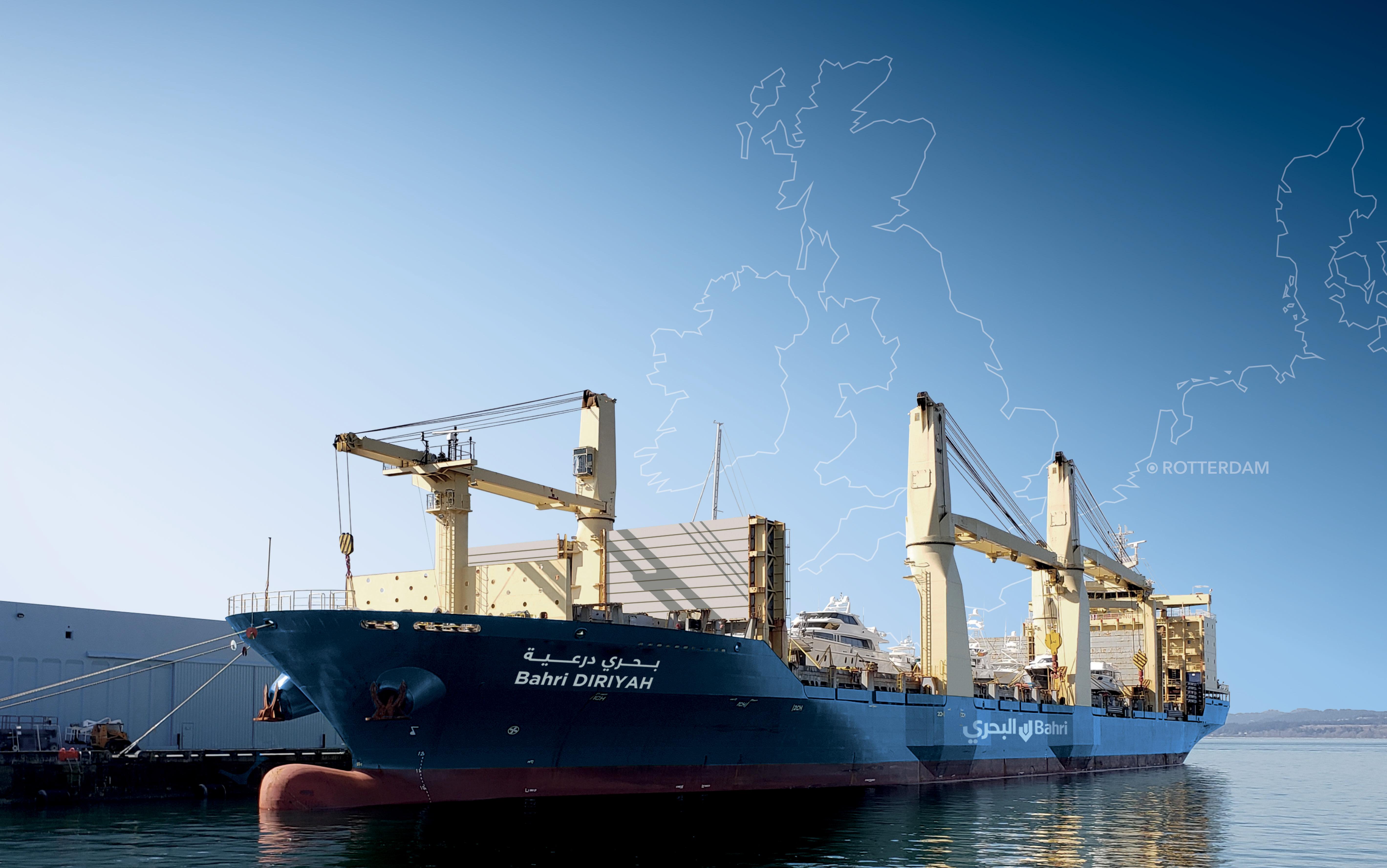
YOUR BREAKBULK AND PROJECT CARGOES NEED TO BE SHIPPED FROM EUROPE TO THE RED SEA, THE ARABIAN GULF, INDIA OR THE FAR EAST? NO PROBLEM - WE ALWAYS HAVE AN ACE UP OUR SLEEVE.
In addition to our Bahri Liner services we have a dedicated vessel for you. With MV Bahri Diriyah, owned by our principals, we have allocations to load project cargo, breakbulk and much more in Rotterdam in calendar week 34. Any Questions? We look forward to assisting you with your inquiry!
Transport Overseas Shipping (Dubai) DMCC | Unit No.1007 | Indigo Icon Tower | Cluster F | JLT – Dubai, UAE
Contact: Richard Hall (Sales Director Middle East and Asia Pacific) | Mobile: +971 58 577 9221 | eMail: r.hall@to-group.com
ANTWERP | BILBAO | BREMEN | DUBAI | SZCZECIN

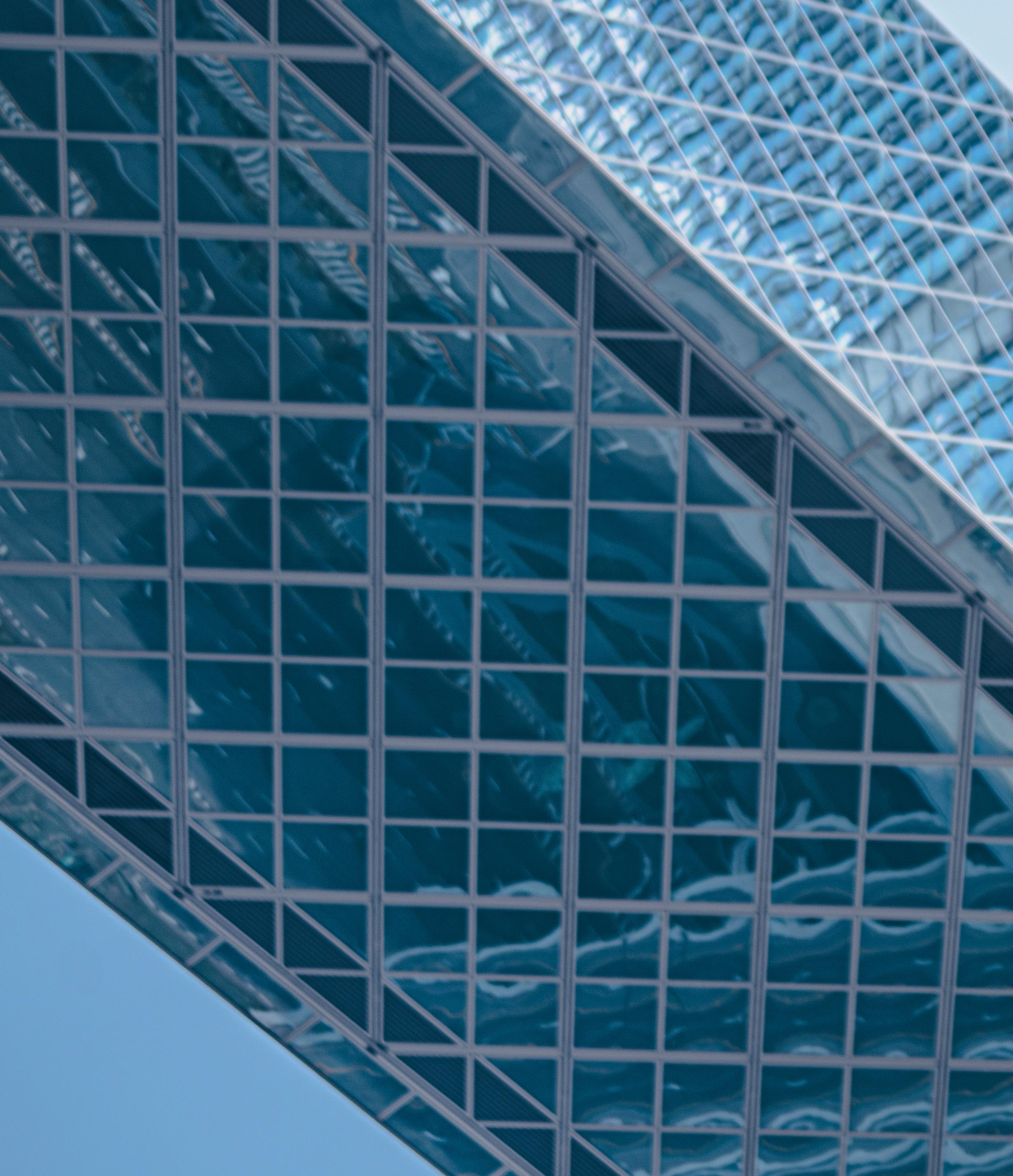
FEDS DRONE POWERED SOLUTIONS’S RABIH BOU RACHED TALKS TO BPME ’S JASON SAUNDALKAR ABOUT DRONE TECHNOLOGY, APPLICATIONS IN THE BUILT ENVIRONMENT, AND ADVANCEMENTS THAT COULD SPAWN NEW USE CASES
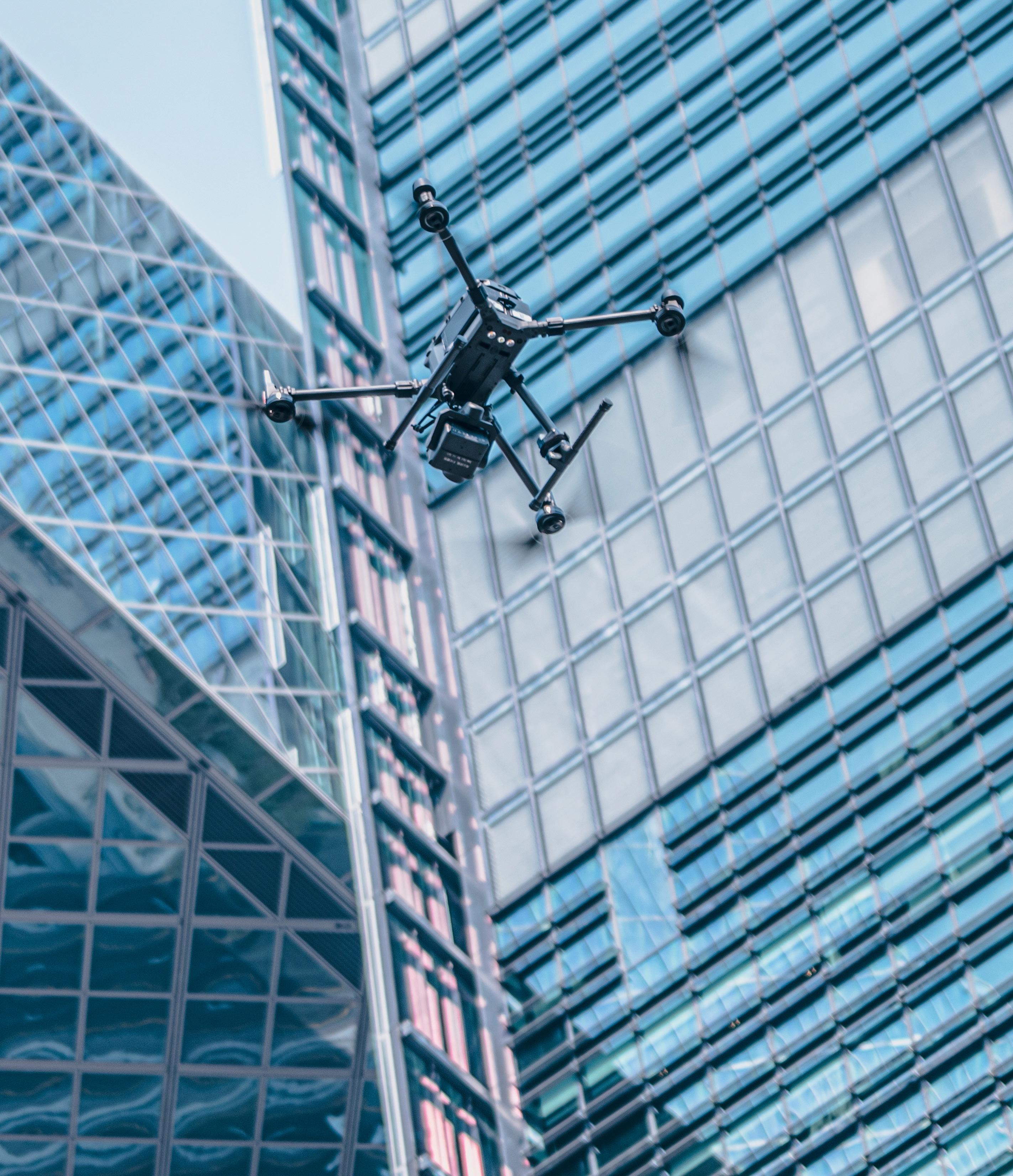
The use of drones across a variety of industries continues to increase globally, with the market size for drones in the built environment said to be approximately US $4.8bn. By 2030, the demand for drones in construction projects is expected to see the market grow to $6.2bn, representing a 4.5% CAGR.
In line with these global trends, Dubai-headquartered FEDS Drone Powered Solutions (FEDS) tracked growth in 2023 across all its key services. "The growth was driven by the increasing demand for advanced drone technologies in specific sectors like construction, oil and gas, and utilities," says Rabih Bou Rached, CEO & Founder of FEDS.
Rached notes that FEDS’ focus on the latest technologies available, coupled with improved regulations

lead to the company’s strong financial performance and several high-profile partnerships. "In 2023 FEDS had a turnover of $54mn and we are on a trajectory in 2024 for a bigger turnover than the previous year."
He elaborates, "As we move through 2024, we’ve continued to build on this momentum. The first half of the year has seen us expand our service offerings and enter new markets, particularly in Africa as well as really growing our presence in Saudi Arabia and other Gulf countries. We are also always on the look-out for the latest in drone tech; this year we’re bringing advanced indoor confined space inspection drones, which have been met with overwhelming interest. Overall, we’re on track to surpass our 2023 performance, further solidifying our position as a leader in the drone services industry."
Rached says that over the past decade, he’s seen excitement around drone technology evolve significantly. "In 2014, drones were seen as a groundbreaking innovation, and by 2020, they were being positively received for practical applications like street sanitisation. Regulations began to take shape around 2015, with Dubai leading the way as the first city to establish drone delivery regulations. 2024 marks our tenth anniversary and it’s incredible to look back at what we’ve achieved, from a turnover in 2014 of just $1,633 and only myself to $54mn and over 50 staff."
Asked about his plans for expansion and whether FEDS is eyeing new markets, Rached confirms the company’s plans are both ambitious and strategic.
"We’re particularly focused on expanding into new markets in East and West Africa. This year marks our first office in Tanzania and before the end of this year we plan to establish another in West Africa, from there we will move inward to build market share."
FEDS recently launched its training and development academy and appointed a new Managing Director dedicated to that area of the business, Ali Seto. As a Dubai Civil Aviation Authority (DCAA) and General Authority of Civil Aviation (GACA) certified Remotely Piloted Aircraft System (RPAS) training centre, the firm can equip people with the skills and practical knowledge required to excel in the field of drone operations. The company is also a licensed trainer for DJI Enterprise Products.
"Our academy is dedicated to providing comprehensive training programmes to equip individuals and organisations
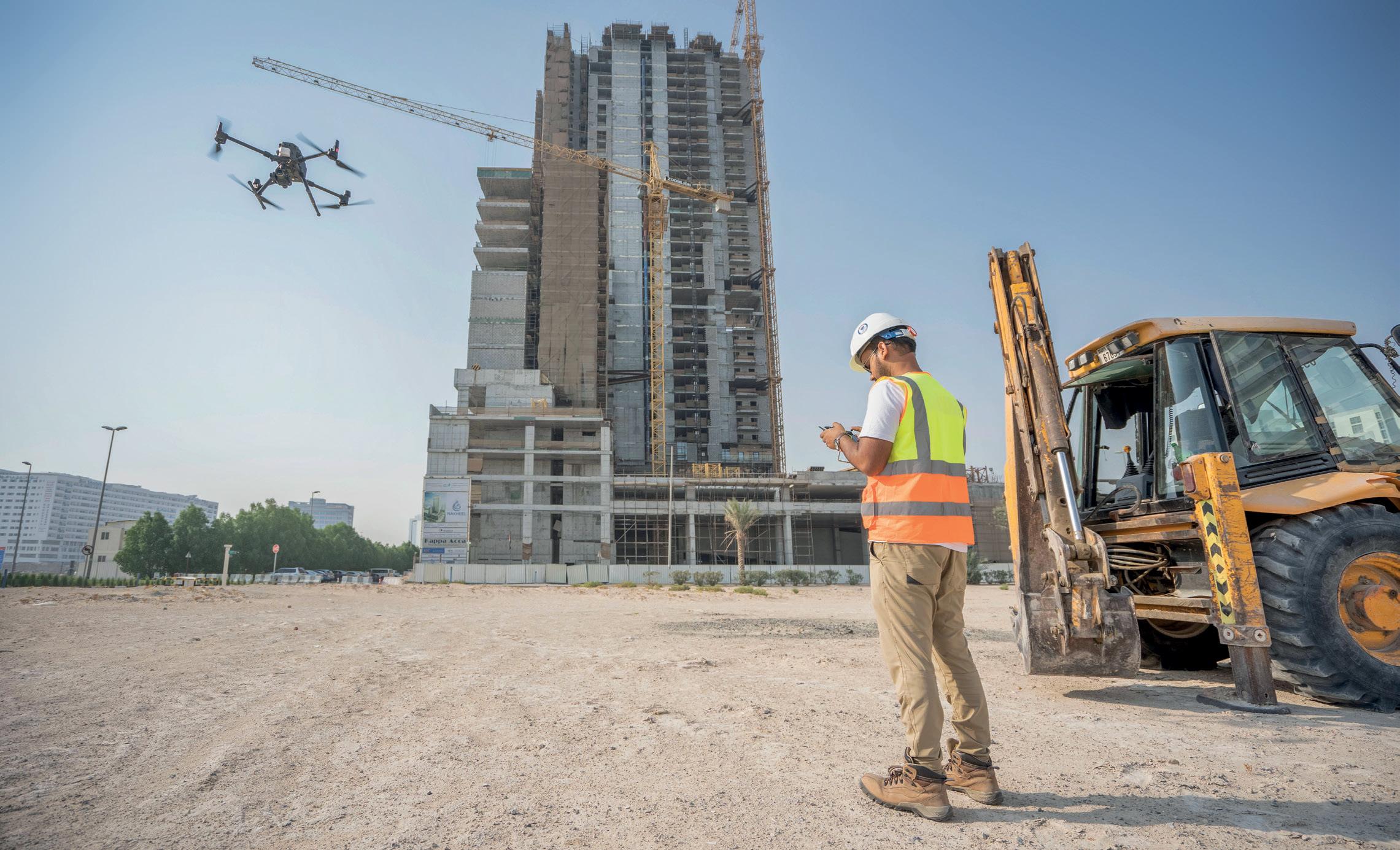
DRONE ADVOCATE
Rabih Bou Rached, CEO & Founder of FEDS.
with the skills and knowledge necessary to utilise and integrate drone technology effectively, while ensuring full compliance with rules and regulations, adherence to the highest safety standards, and a commitment to responsible drone operation. Currently we offer: Commercial Drone Training; Advanced Training; DJI Dock Training and Drone Surveying & Mapping. We have plans to expand these services in due course, given that we are fully booked for five months solid at any given time," comments Rached. He continues, "First Person View (FPV) drones are another area of investment or us. Whilst we’ve offered this as a solution for the past six years, it’s really only become a market staple in the last two years. Real estate and event companies use FPVs the most, offering site walk throughs,
so the end user can properly visualise what they are either buying or giving an accurate representation of big events where businesses then use the footage for marketing material. Small and nimble, FPV Drones create previously impossible indoor filming opportunities. Fly through narrow gaps, orbit around chandeliers, and fly up escalators- showcase spaces in a way that captivates audiences. It’s the definitive best way to tour restaurants, real estate listings, hotels, offices, event venues, or any other space really. Some of our FPV shoots include the Sharjah Performing Arts Academy, Dubai Real Estate and Aviv medical centre."
Pressed about challenges FEDS faces today, Rached responds, "One of the key challenges we face is the need for regulation and infrastructure to keep pace with the rapid advancements in technology. While we have control over the technologies we apply to our market offerings, the regulatory environment and infrastructure can sometimes lag behind, creating obstacles to fully deploying our solutions."
"To address this, we’re taking a proactive approach by collaborating closely with regulatory bodies and industry stakeholders. By participating in regulatory discussions and offering insights from our experience, we aim to help shape a framework that supports innovation while ensuring safety and compliance. Additionally, we’re focusing on ensuring our technologies are
Surveying and mapping are among the most common use cases. Drones equipped with advanced sensors and imaging technologies can quickly and accurately capture data over large areas, providing detailed topographic maps and 3D models says Rached.
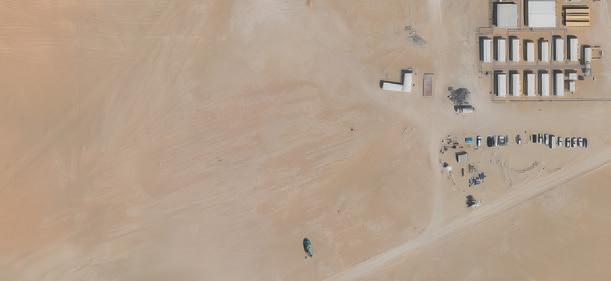



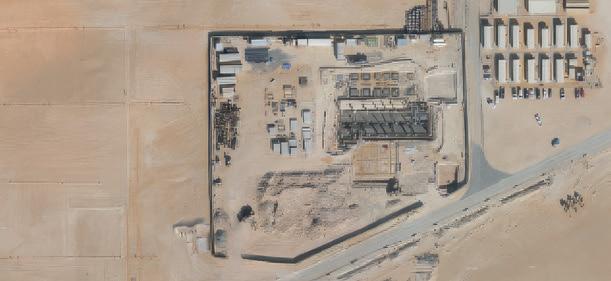
adaptable to various regulatory environments, allowing us to operate efficiently across different regions."
He points out that variability in infrastructure readiness across the markets it operates in is another challenge, and says the company is investing in partnerships and local collaborations that help it navigate these infrastructure challenges more effectively.
"Furthermore, the rapid pace of technological change presents its own set of challenges. Keeping up with the latest innovations requires continuous investment in research and global partnerships, as well as in the upskilling of our workforce."
"Lastly, market competition is intensifying as more players enter the drone services space. To stay ahead, we
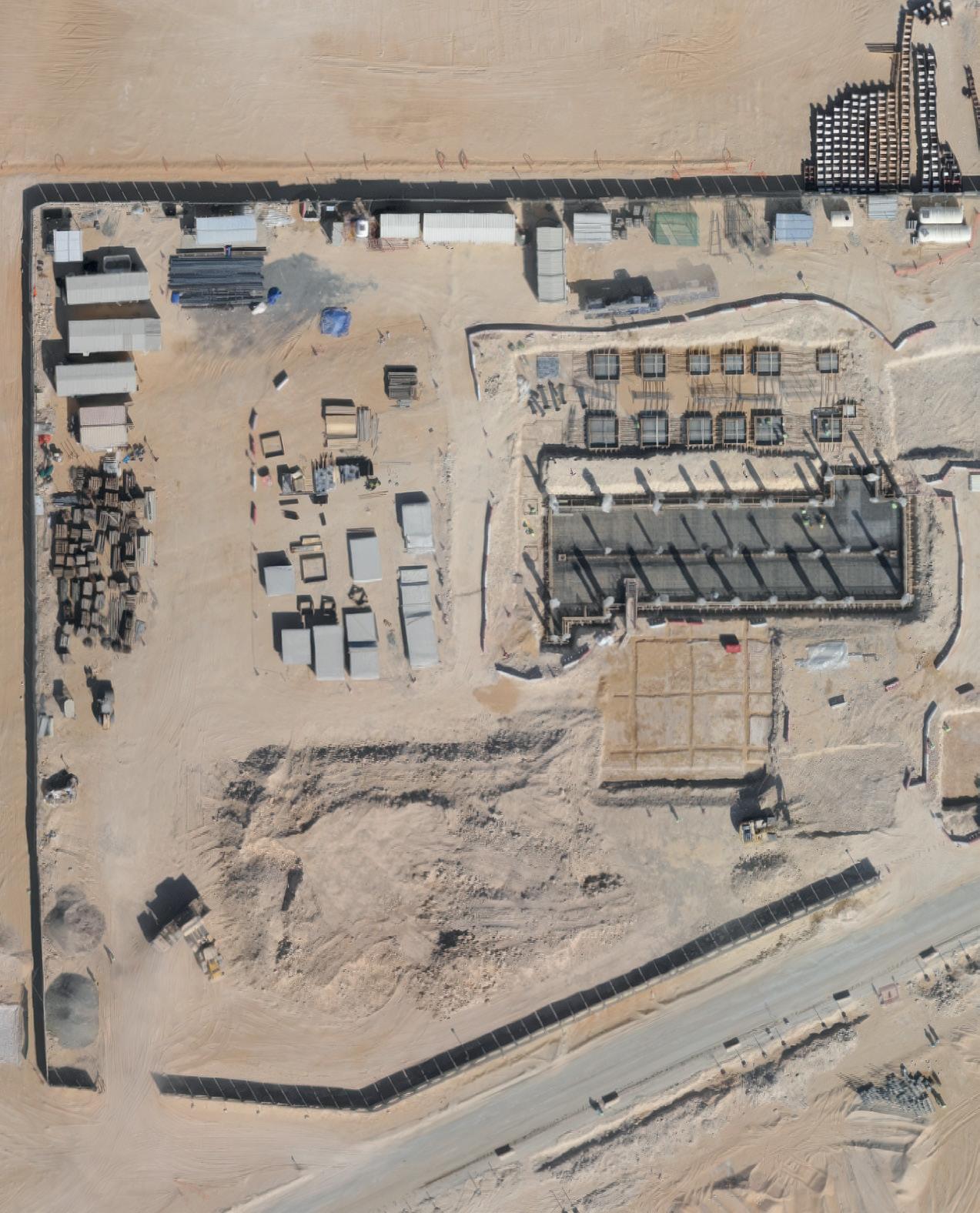

Drones can be used to calculate stockpile volume measurements making it easy to compare current stockpile volumes to previous surveys and track site progress.
are differentiating ourselves through the quality and scope of our services, focusing on providing end-to-end solutions that cater to the specific needs of our clients. By leveraging our deep industry expertise and innovative technology, we’re able to deliver superior outcomes that set us apart from the competition," he notes.
Although the global construction industry has a reputation for being technology averse, entities within the sector have begun accelerating their acceptance of technology - including drones – in response to evolving marketing requirements, dynamics and challenges.
Rached highlights, "The construction sector has increasingly embraced drone technology, with a range of applications that are transforming how projects are managed and executed. Currently, the most popular uses of drones includes surveying, mapping, construction monitoring, and inspection services. These applications have become essential tools for construction companies, offering significant benefits in terms of efficiency, accuracy, and safety."
"Surveying and mapping are among the most common use cases. Drones equipped with advanced sensors and
imaging technologies can quickly and accurately capture data over large areas, providing detailed topographic maps and 3D models. This capability allows construction companies to conduct precise site assessments and planning, reducing the time and cost associated with traditional surveying methods. The main customer reports we’ve had in terms of solution benefits include a much faster turn-around time than traditional survey methods, with higher accuracy and additional granularity. These faster turn-around time results in a more costeffective way of carrying out land surveys, and delivers data accurate to up to one centimetre," Rached explains.
Construction monitoring is another area where drones are making a substantial impact, Rached confirms. "By providing real-time aerial views of a site, drones allow project managers to monitor progress, track resources, and identify potential issues before they escalate. This level
The construction sector has increasingly embraced drone technology, with a range of applications that are transforming how projects are managed and executed.
DRONE OPERATIONS
Currently, drones are piloted by skilled operators, but advancements in AI and machine learning are rapidly closing the gap between manual control and full autonomy says Rached.

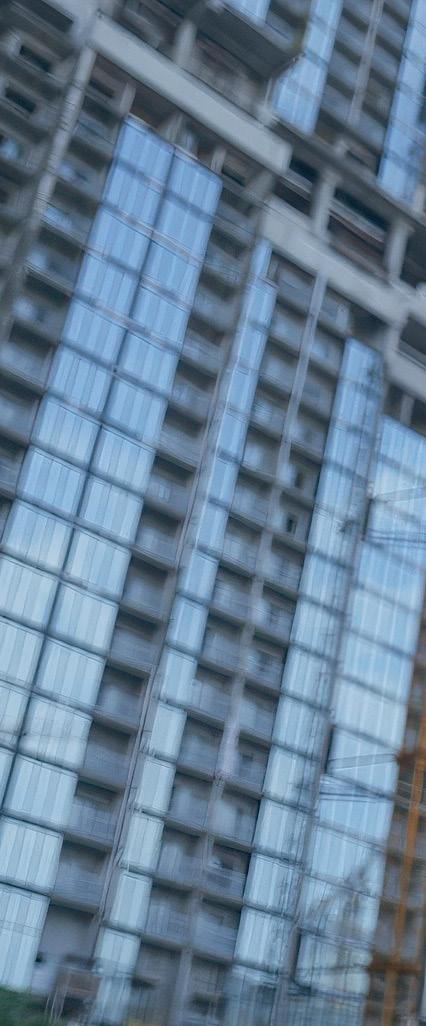
of oversight leads to better decision-making and helps ensure that projects stay on schedule and within budget."
"Inspection services, particularly for hard-to-reach or hazardous areas, have also seen significant adoption. Drones can safely and efficiently inspect structures like bridges, towers, and rooftops, identifying defects or areas of concern without putting workers at risk. This not only enhances safety but also ensures that any necessary repairs or maintenance are addressed promptly, improving overall project quality."
He states, "The benefits of using drones in these use cases are clear: faster data collection, improved accuracy, enhanced safety, and cost savings. As the technology continues to evolve, we expect to see even more innovative applications in the construction sector, further cementing the role of drones as an indispensable tool for the industry."
Asked to elaborate on how drones can be used to overcome longstanding and new challenges, Rached outlines:
1. Safety risks: One of the most significant challenges is ensuring the safety of workers, especially in hazardous or hard-to-reach areas. Drones are mitigating these risks by taking on tasks that would otherwise put workers in danger. This not only reduces the likelihood of accidents but also improves the overall safety culture on construction sites.
2. Project Delays: Construction projects often face delays due to various factors, including poor site monitoring and unforeseen issues. Drones provide realtime, accurate aerial data, allowing project managers to monitor progress closely, identify potential problems early, and make informed decisions quickly. This helps keep projects on schedule, reducing delays and associated costs, especially for large projects and those in remote areas.
One of the key challenges we face in the drone industry today is the need for regulation and infrastructure to keep pace with the rapid advancements in technology.
3. Cost Overruns: Drones contribute to cost control by enhancing efficiency in surveying, mapping, and inspections. They reduce the need for expensive equipment and labour-intensive processes, thereby lowering operational costs. Additionally, by improving accuracy in data collection, drones help prevent costly errors and rework.
4. Data Accuracy and Accessibility: Traditional methods of data collection can be time-consuming and prone to errors, leading to inaccuracies in planning and execution. Drones offer a solution by capturing highresolution images and data quickly and accurately over

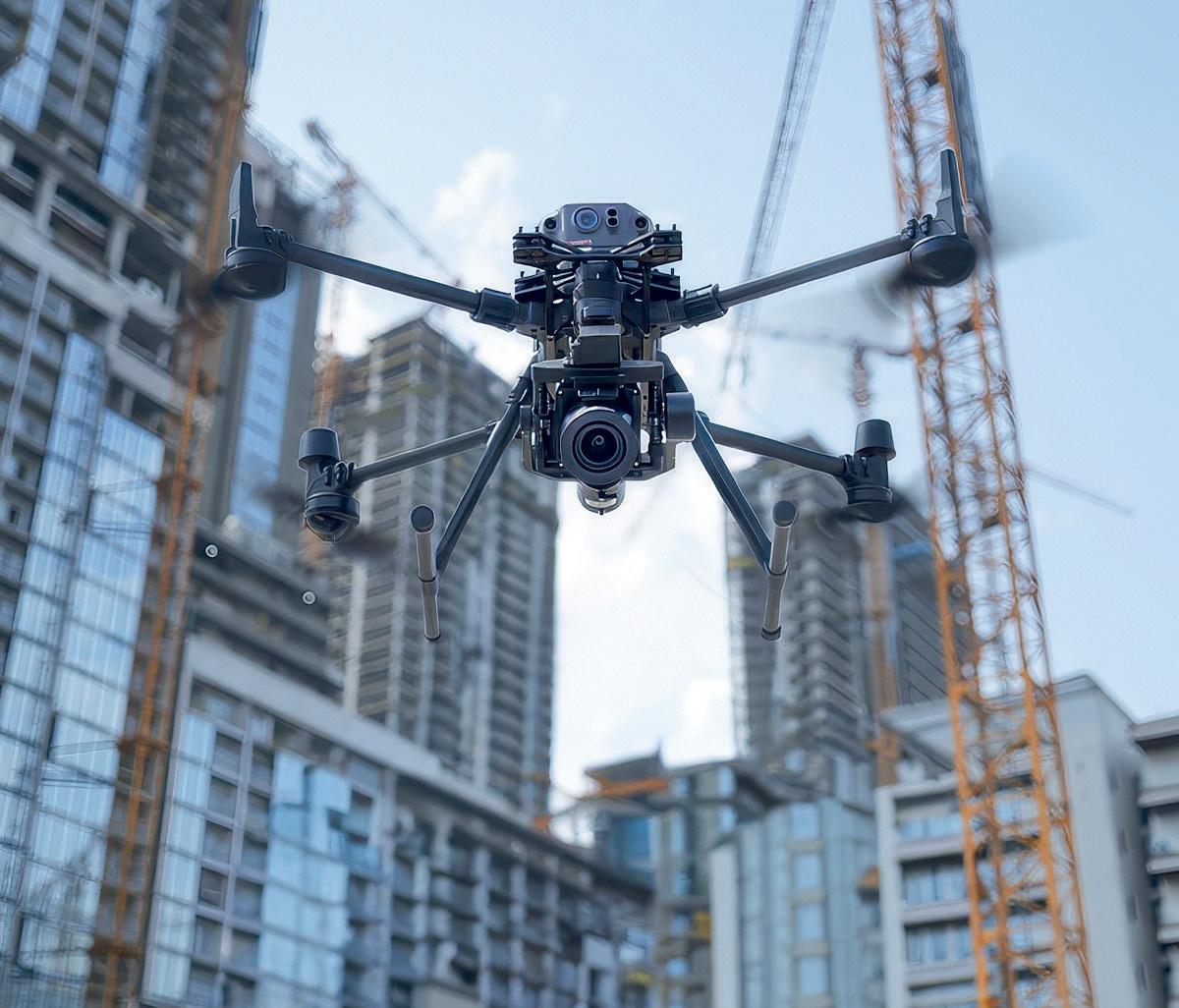
large areas. This data is easily accessible and can be used to create detailed 3D models, maps, and reports, improving the precision of site assessments and planning.
5. Environmental and Logistical Challenges: Construction sites often have difficult terrain or are located in remote areas, making access and logistics a challenge. Drones can easily navigate such environments, providing valuable insights without the need for physical presence.
"By addressing these challenges, drones are enhancing the efficiency and safety of construction projects and paving the way for more innovative and sustainable construction practices in the future," Rached says confidently.
While drones have enabled the sector to progress, there are limitations that restrict their usage. Rached comments:
1. Battery Life: One of the primary limitations of current drones is their battery life, which restricts the duration of

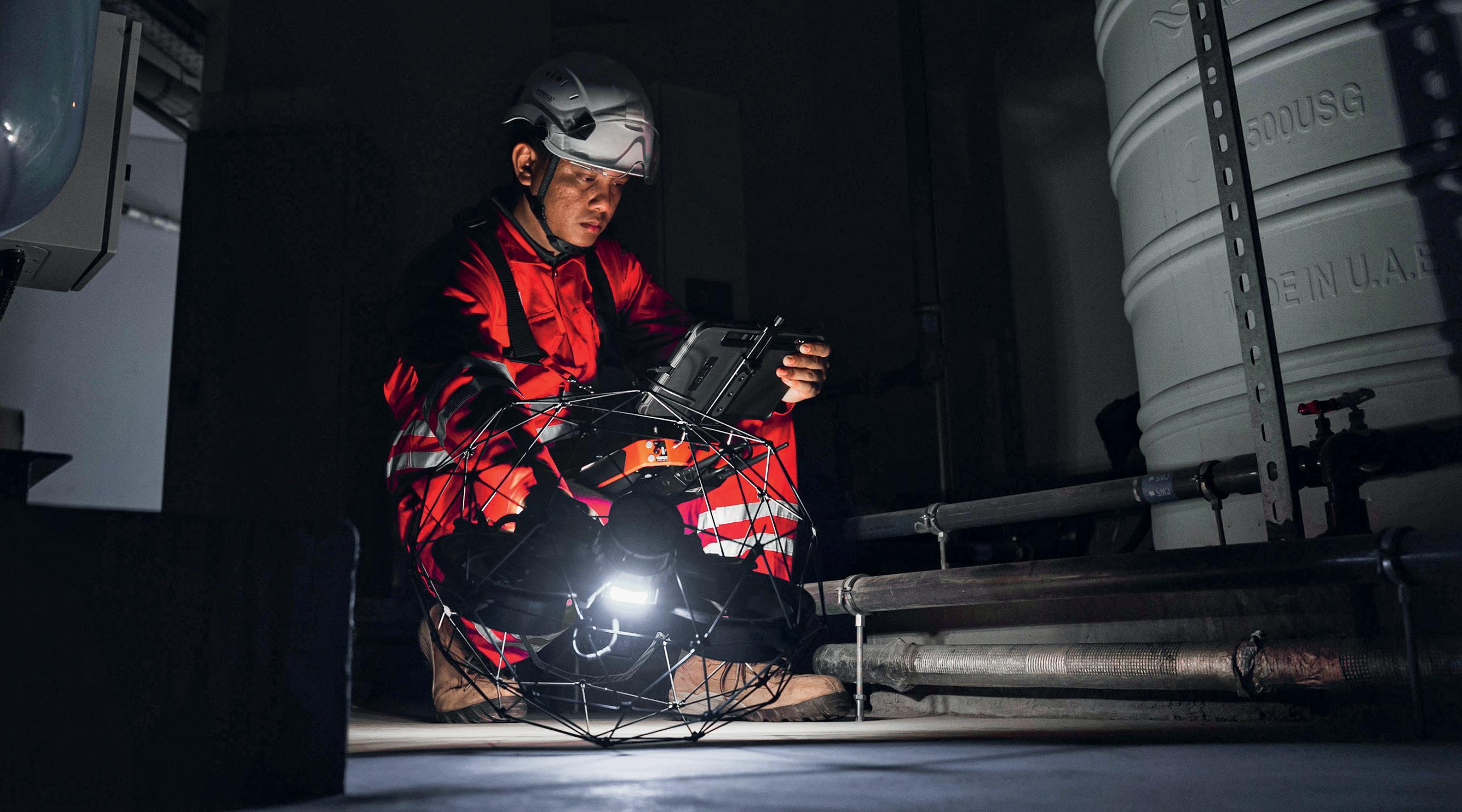
their flights. This can be challenging for large projects where extensive surveying or monitoring is required. To work around this companies deploy multiple drones in rotation or use drones with swappable batteries to extend operational time. Additionally, advancements in battery technology and energyefficient drones are being developed to address this limitation.
2. Payload Capacity: Drones have a limited payload capacity, which restricts the types and quantities of sensors or equipment they can carry. This limitation can impact their ability to perform certain tasks, such as carrying heavier surveying instruments or specialised cameras. The workaround involves using drones designed for heavy lifting or employing a fleet of drones with complementary capabilities to achieve the desired outcomes.
3. Regulatory Constraints: Drones are subject to strict regulations that can vary widely by region, limiting their use in certain areas or for specific tasks. For instance, restrictions on flying in overpopulated areas or near airports can hinder their deployment on urban construction sites. Companies address
this by staying up-to-date with local regulations, obtaining necessary permits, and working closely with regulatory bodies to advocate for more flexible rules as the technology evolves.
4. Data Processing Challenges: While drones can capture vast amounts of data, processing and analysing this data can be time-consuming and resource-intensive, especially for large projects. To manage this, companies are investing in software and cloud-based platforms that can quickly process drone data and integrate it into their project management systems.
5. Operational Range: The operational range of drones is another limitation, particularly in large construction sites or remote areas where drones may struggle to maintain a stable connection with their operators. This limitation is being addressed by using drones with extended range capabilities, deploying signal boosters, or relying on autonomous drones.
Rached remarks, "Ongoing advancements in drone technology coupled with strategic workarounds, continue to expand the ways in which drones can be effectively utilised in the built environment."

Drone mapping is the use of aerial data to create 2D and 3D maps, models, and other outputs, such as orthomosaics. 3D mapping with a drone is efficient and a lot more cost-effective than traditional alternatives.

Technology is advancing at pace, which means modern drones and those coming onto the market in the near future will feature a number of benefits, potentially allowing for new use-cases and broader use in existing scenarios.
Rached explains, "This year we’ve seen significant strides in autonomous drone operations and drones for logistics. We’ve also seen the underlying technology and supporting infrastructure receive upgrades, which further enables artificial intelligence (AI) integration."
He notes that drones will increasingly use AI to autonomously analyse construction progress and detect issues like structural defects or discrepancies in real-time, which will reduce the reliance on manual inspections and improve project accuracy.
"With increasing sustainability concerns, drones could be used for monitoring environmental impact
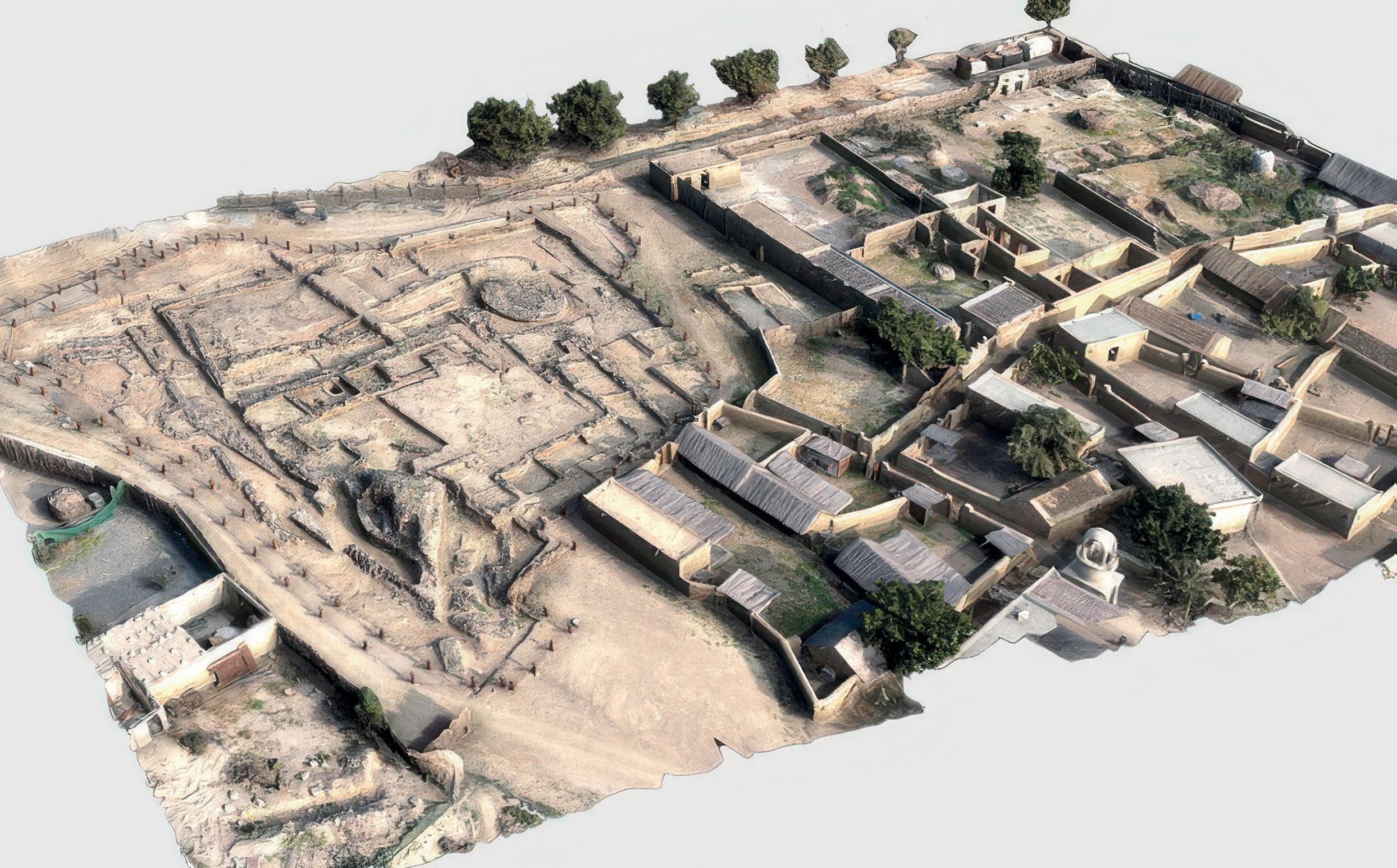
during construction, such as emissions tracking, noise levels, and soil integrity. This can help construction companies comply with environmental regulations and improve green building practices."
"Logistics drones can also play a critical role in transporting equipment and materials, especially in hardto-reach locations like mountainous terrain. This can significantly reduce delays caused by difficult access points and improve overall project efficiency," he points out.
"Fully autonomous drones will become essential for 24/7 surveillance and safety inspections on construction sites. These state-of-the-art drones can monitor workers' compliance with health and safety regulations, identify hazards, and deter unauthorised access to construction sites," Rached says.
Pressed about when we may see drones move from being piloted by human operators to AI-powered autonomy, Rached reckons that future is not too far away.
Drones are commonly used for exterior inspections, however FEDS notes it will this year bring advanced indoor confined space inspection drones to the market.
"At FEDS, we’re on the cusp of a significant shift towards AI-powered autonomy. Currently, drones are piloted by skilled operators, but advancements in AI and machine learning are rapidly closing the gap between manual control and full autonomy."
"In the near future, we envision drones that can be assigned specific tasks—such as inspecting a building, surveying a site, or monitoring infrastructure—and left to carry out these tasks independently. The technology is evolving to a point where drones will be able to navigate complex environments, make realtime decisions, and adapt to changing conditions without human intervention," he comments.
While drone technology is advancing quickly, there are still hurdles to overcome in terms of regulatory frameworks and the development of robust fail-safes, he states.
"We're actively working on integrating AI into our operations, ensuring all proper testing of these capabilities have been proven in controlled environments, and preparing for a future where drones operate with a high degree of autonomy. We believe that within the next few years, AIpowered drones will become a standard tool in industries like construction, infrastructure, and environmental monitoring, significantly enhancing efficiency and safety," he concludes.

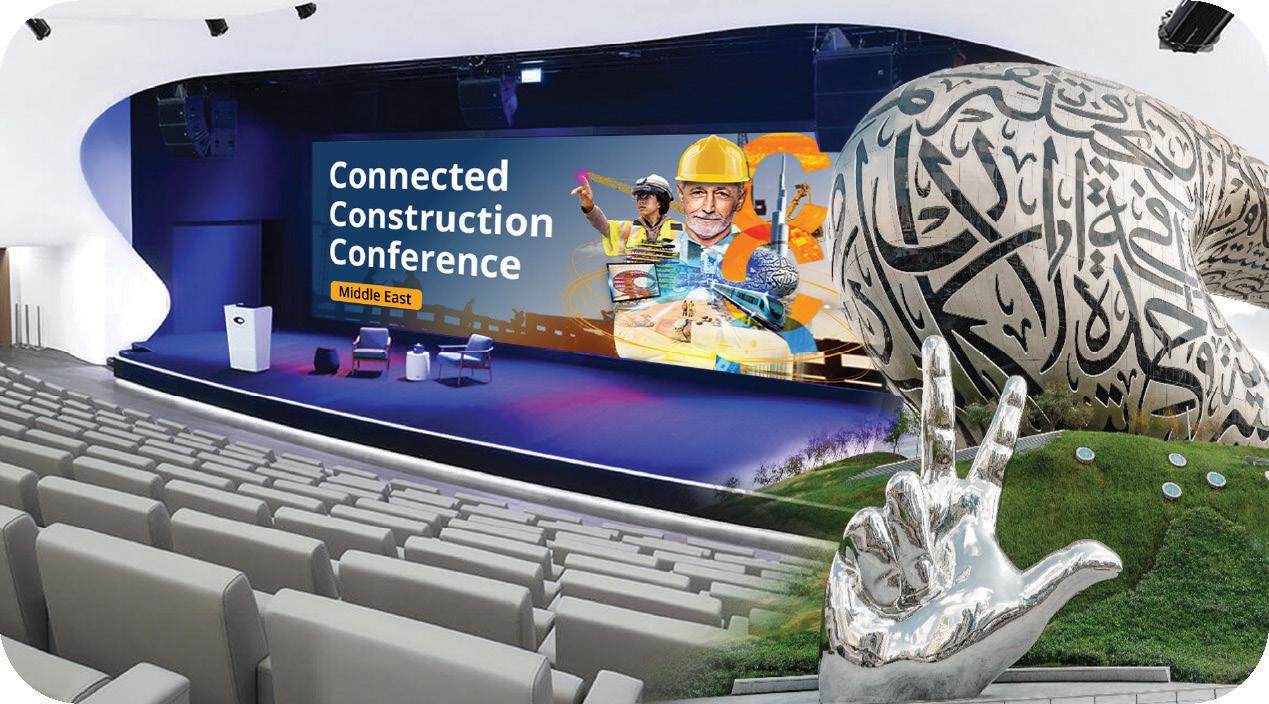

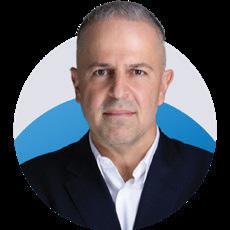





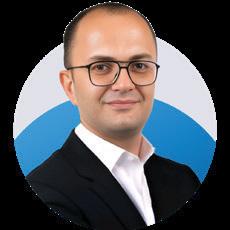
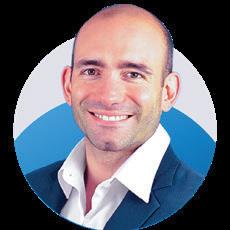


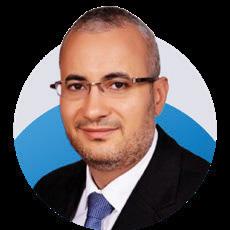




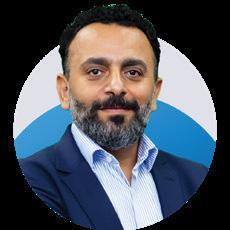
We’re not just discussing the future; we’re constructing it.
Join us on October 30th at the iconic Museum of the Future, Dubai, for a transformative event bringing together over 300 industry leaders, innovators, and government officials.
Don’t miss your chance to network, gain exclusive insights, and be at the forefront of digital transformation in the construction industry.
KEY TOPICS:
• Data Management in Construction
• Future Trends and Emerging Technologies
• Connected Construction
• Resilience and Adaptation Challenges
• Digital Transformation
• Dubai as a World Model at the Forefront of Construction Innovation
Reserve your seat Limitted Free Seats at Museum of the Future 30 October, 2024 Reserve your seat Limitted Free Seats
Museum of the Future 30 October, 2024


BPME SPEAKS TO HAMAD AL ABBAR, MANAGING PARTNER OF LMD AND SEAN MCCAULEY, CEO OF DEVMARK ABOUT THE PIER RESIDENCE, THEIR PARTNERSHIP AND THE REAL ESTATE SECTOR IN THE UAE
Late in July 2024, developer LMD announced it had partnered with real estate project sales and marketing firm Devmark to launch a new residential development. Located in Dubai Maritime City, the development aims to unlock promising potential for capital growth for early investors. In line with this goal, Devmark was appointed as the master agent for sales and marketing of the project.
Designed by the architectural firm Arkiplan and with interiors by J2 Design from Singapore, The Pier Residence is said to merge contemporary style with Dubai’s rich maritime heritage. The building’s façade was designed to be reminiscent of a wave’s crest, and looks to create a striking visual that showcases serene elegance and nautical charm, the developer said.
It also noted that each residence is meticulously crafted with an eye for detail that echoes the tranquillity of the sea, and features expansive windows and private balconies that extend living spaces outwards to the azure horizon. Here, Big Project Middle East’s Priyanka Raina talks to Hamad Al Abbar, Managing Partner of LMD and Sean McCauley, CEO of Devmark about the project, their partnership and real estate in the UAE.
Asked about LMD’s overarching vision for real estate development in the region, Al Abbar responds, "Crafting transformative residential and commercial experiences has been LMD’s dedicated pursuit since 2007. It has been an everevolving journey of exceptional innovation with the future in mind. Our journey resulted in a significant portfolio of iconic mixed-use developments spanning the best locations in Egypt, Dubai, Spain, and Greece. We offer community-centric experiences powered by a holistic vision of seamless living — forever transforming the conventional norms of real estate."
"In 2011, the company embarked on a growth journey by founding LMD UAE, which succeeded in developing projects with around 3,000 units in Dubai with the very best of European quality derived from the deep understanding of the region's intricacies, topped with a wealth of unparalleled real estate experience of the management and owners. LMD UAE is making a strong debut in Dubai, promising a new standard of intelligent executive luxury with projects like Continental Tower, Rukan, Boutique XII, Marina Living, Boutique 23, La Boutique & The Pier Residence."
Discussing LMD’s plans for future growth, Al Abbar notes that the firm is consistently pursuing growth through various avenues. "Before making any strategic moves, we conduct thorough research to evaluate
The project was designed by Arkiplan whereas its interiors were shaped by Singapore-based J2 Design.

potential expansion opportunities, whether in markets where we already have an established presence or in new countries we are exploring. We anticipate exciting developments in the near future," he clarifies.
Shifting focus to The Pier Residence and the project’s inspiration and vision, LMD notes that the waterfront location is the main inspiration behind what the Pier Residence stands for, and says that the project will offer the best of both worlds: the stillness of waterfront living and the convenience of city life.
Al Abbar elaborates, "At The Pier Residence, residents can enjoy a vibrant and fulfilling lifestyle inspired by Dubai’s rich heritage and spirit of adventure. With direct access to the sea, airports, and public transportation, it’s a place where convenience meets luxury. Whether you’re commuting to work on Sheikh Zayed Road, jetting off on an international adventure, or exploring the city’s vibrant cultural scene, the world is within easy reach."
"The architecture of The Pier Residence is inspired by a fusion of nautical design and natural beauty. Its unique
form mimics a wave’s crest, creating a striking visual exterior that blends with the panoramic expanse," he adds. With regards to the project’s architecture and interior design, the firm worked with Arkiplan and J2 Design from Singapore respectively. Pressed for his thought on the selection of those firms, Al Abbar explains, "Arkiplan is a globally renowned architectural firm known for
The sustained interest in properties that offer a combination of high-end finishes, exclusive locations, and sustainable designs suggests that these will remain the preferred choice for premium lifestyle seekers.
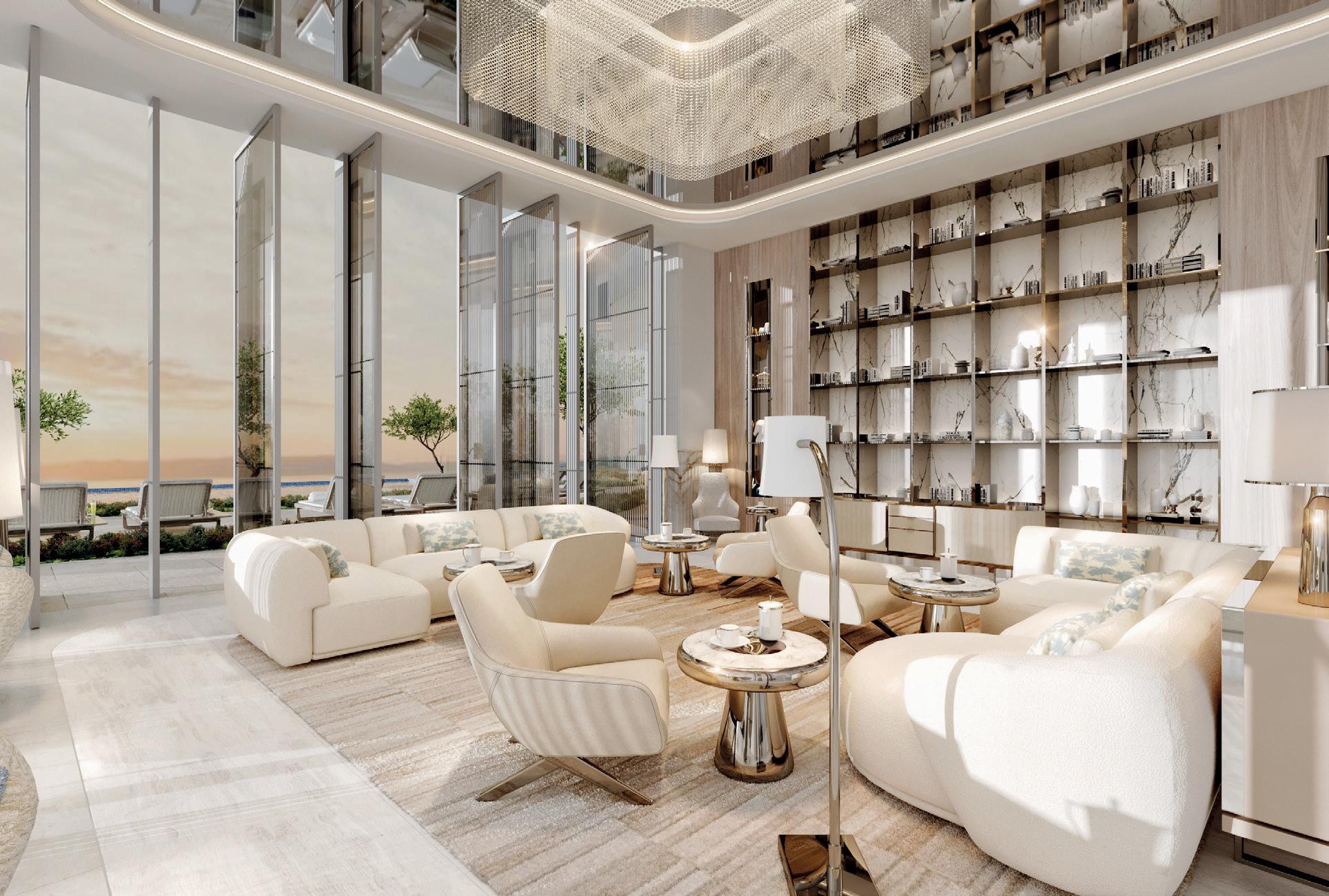
its enthusiasm and expertise with successful projects worldwide. Our goal was to partner with a renowned architect to prioritise functionality while creating iconic designs inspired by the surrounding environment."
"J2 Design is a specialist in the hospitality sector, designing hotels, resorts and private homes worldwide. We brought J2 Design on board to add their expertise to our residential project, aiming to elevate the residential experience and create a space that feels like a resort."
Asked to elaborate on the project’s wellness and sustainability focused features, Al Abbar highlights, "Our projects incorporate environmentally friendly materials across all projects. Additionally, each project features expansive landscapes, further enhancing the wellness and environmental focus of our designs."
When the project was announced, the developer said that it anticipated completion in 2026, and noted that Devmark was already accepting bookings and inviting prospective residents to explore the project and the lifestyle it will offer. With regards to how the developer plans to


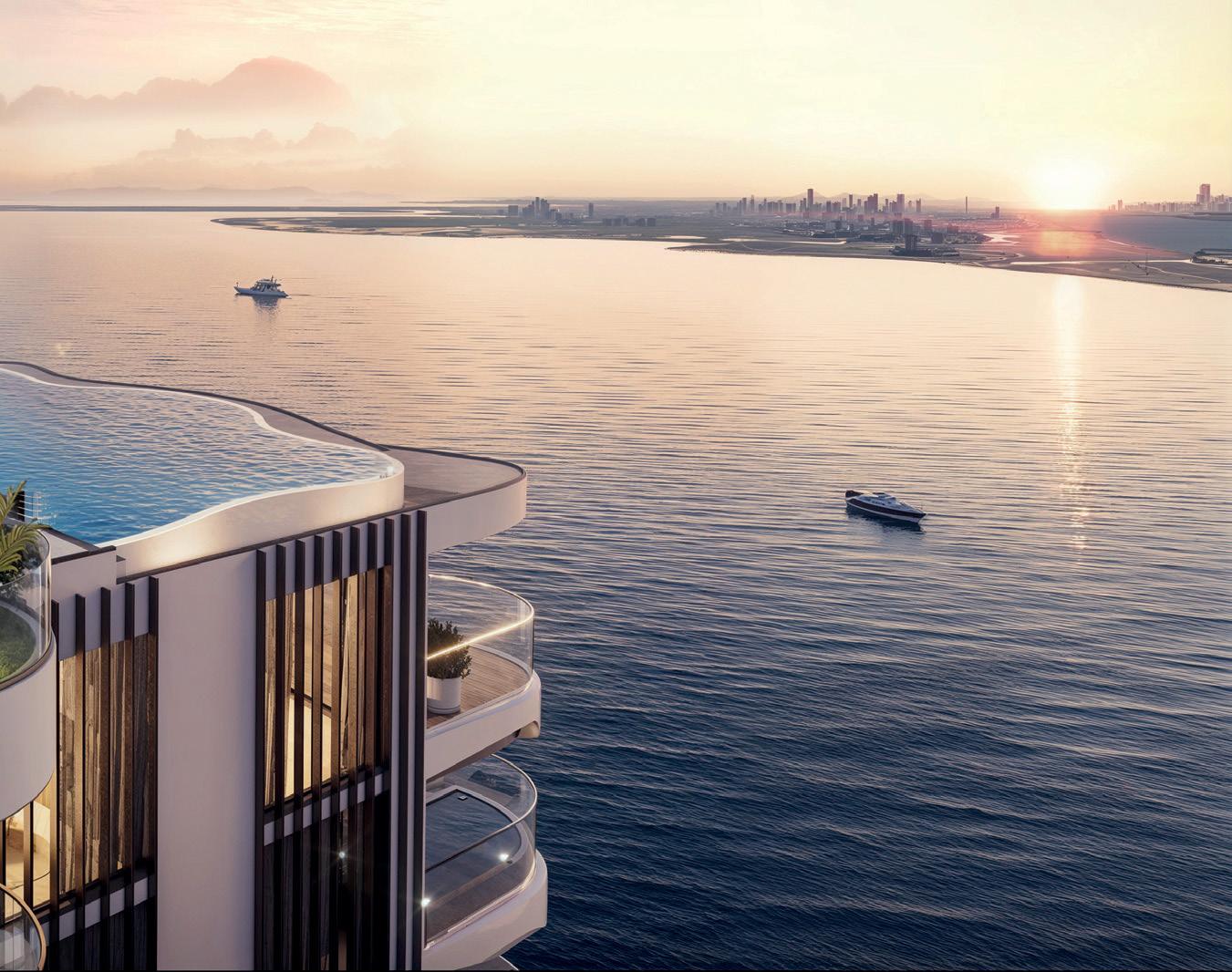
stick to that deadline, given the propensity for project timelines to drift, Al Abbar says, "LMD UAE has its own dedicated contracting company that works exclusively on its projects. This allows us to have full control over scheduling and ensures that delivery times are consistently met. We closely manage all project details to ensure that our client’s expectations are met with no issues. Therefore, we are highly confident that all units will be delivered on time, while maintaining the highest quality standards."
That said, Al Abbar notes that the developer will have to navigate some challenges during the project’s development.
He explains, "While Dubai’s dynamic real estate market offers great opportunities, it also comes with its own unique challenges during the development process. It can be a time consuming and expensive process to navigate the complex regulatory landscape and secure all the necessary permits and approvals from multiple authorities."
"The condition of the soil is one of the challenges that need to be addressed early on. This will require soil improvements to be done, in order to deliver the best quality," he adds.
In terms of how he sees LMD’s residential development
says that
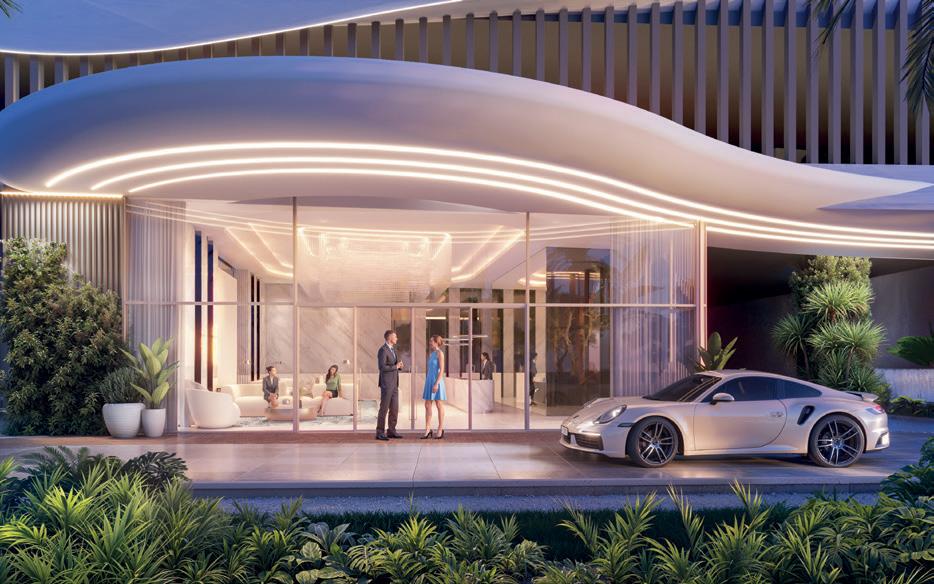
fitting into the vibrant real estate segment in Dubai, McCauley remarks, "The Pier Residence exemplifies the ongoing surge in demand for waterfront properties in Dubai, a trend driven by the unique benefits and lifestyle these locations offer. Waterfront properties are particularly valued for their serene views, the calming influence of the sea, and the sense of exclusivity it brings, appealing strongly to those seeking a luxurious and relaxed lifestyle."
"The rise of remote work has also given people the freedom to choose where they live, and many are choosing environments that combine comfort with a connection to nature. Waterfront properties provide an ideal blend of luxury and well-being, allowing residents to enjoy a healthier, more balanced lifestyle. Natural surroundings and access to open spaces have become increasingly important, particularly as more people seek homes that support their physical and mental well-being."
He continues, "Waterfront land is limited, making these properties rare and highly sought-after, naturally creating a strong demand. For residents, it’s about securing a home in a coveted location that offers tranquillity and exclusivity. For investors, the allure is the significant appreciation potential anchored by the finite nature of such prime locations."
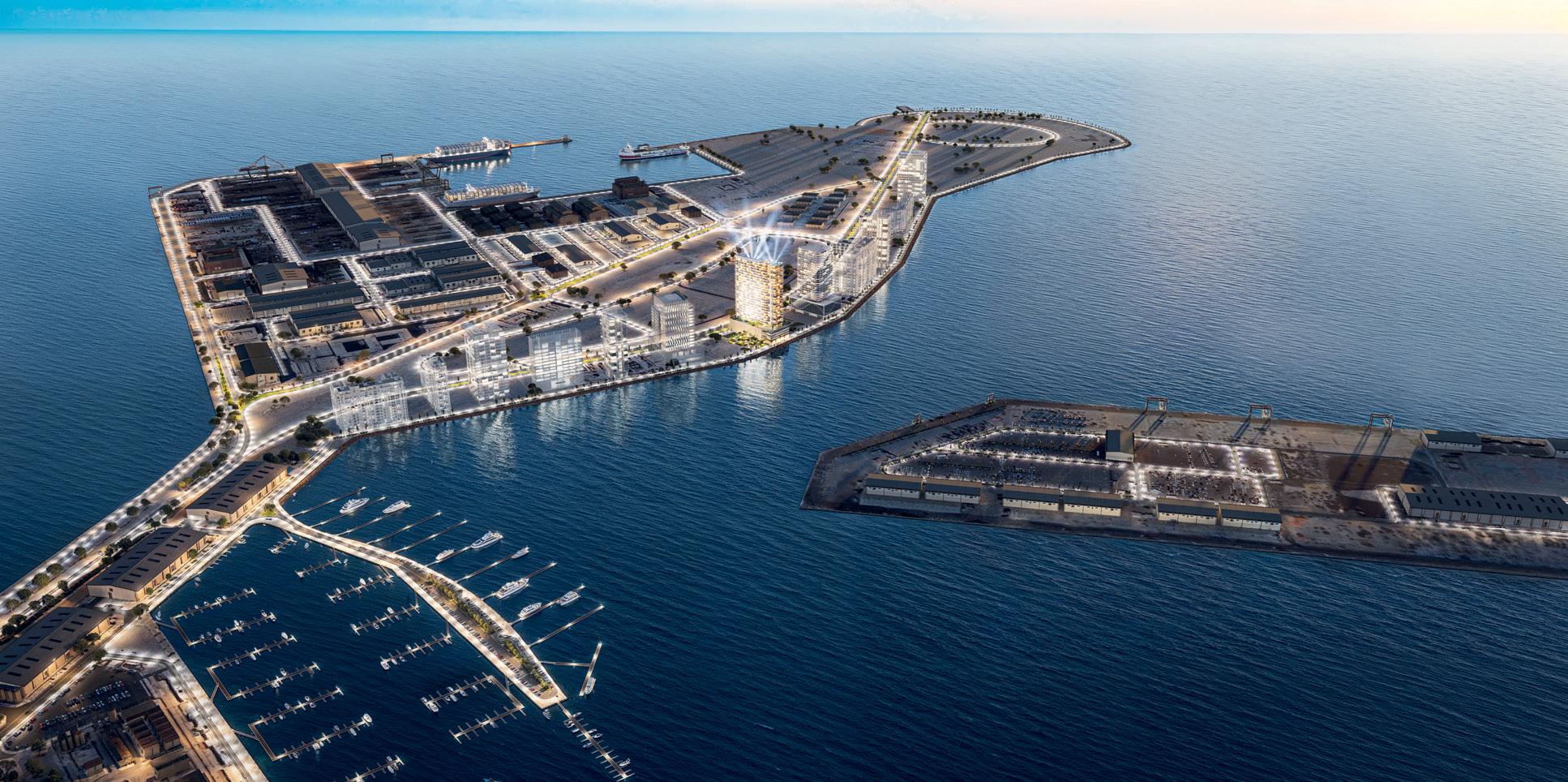
SURGING DEMAND
Asked about features that makes The Pier Residences standout in the market, McCauley highlights, "These residences represent the pinnacle of sophisticated living. Key features included expansive windows and private balconies that extend living spaces towards the azure horizon, perfect for alfresco dining and enjoying panoramic views. Each apartment combines comfort with elegance, underscored by high ceilings that amplify the sense of space, expansive windows illuminating interiors with natural light, and Scandinavian oak hardwood-style flooring that introduces warmth and fully automated smart home technology. The kitchens feature marble or quartz countertops and sophisticated appliances from Bosch and Siemens, optimised for functionality, while the bathrooms, inspired by the finest spas, feature Italianinspired interiors, creating a sanctuary of relaxation."
"Beyond the private living spaces, The Pier Residence boasts a suite of exceptional amenities designed for wellness and social engagement. An infinity pool visually merges with the ocean alongside a state-of-the-art gym, a tranquil yoga studio, and a padel court. Additionally, comprehensive jogging and
walking trails, a residents’ lounge, and a creatively designed indoor play area for children underscore the development’s focus on community and well-being," he points out.
Going forward, McCauley reckons that the Dubai real estate market is expected to continue its focus on luxury and exclusive waterfront properties, which have consistently attracted significant buyer interest. At The Pier Residence, this trend is embodied through sophisticated design, luxury amenities, and strategic location, making it a desirable choice for discerning buyers and investors, he states.
Wrapping up his thoughts on The Pier Residence he says, “The sustained interest in properties that offer a combination of high-end finishes, exclusive locations, and sustainable designs suggests that these will remain the preferred choice for premium lifestyle seekers. With its unique waterfront setting and comprehensive lifestyle offerings, the Pier Residence is well-positioned to capitalise on these demands.”
He concludes, “What’s driving this surge is a growing preference for properties that offer high-end finishes, exclusive amenities, and sustainable design. Buyers today are more discerning; they’re looking for homes that provide a premium lifestyle and align with their values, whether environmental responsibility or the overall quality of construction. This demand for excellence pushes prices upward as developers respond with offerings that meet these elevated expectations.”
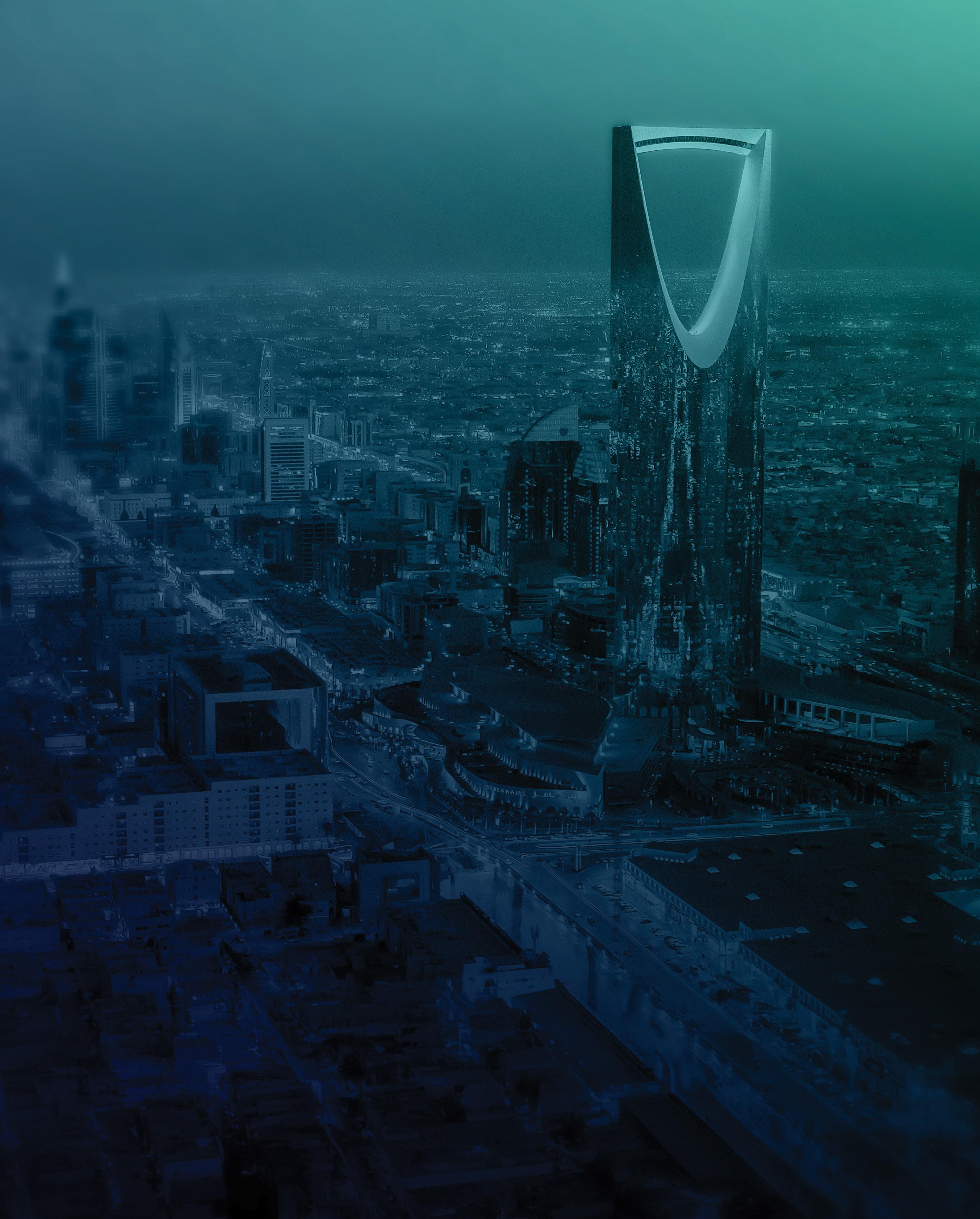
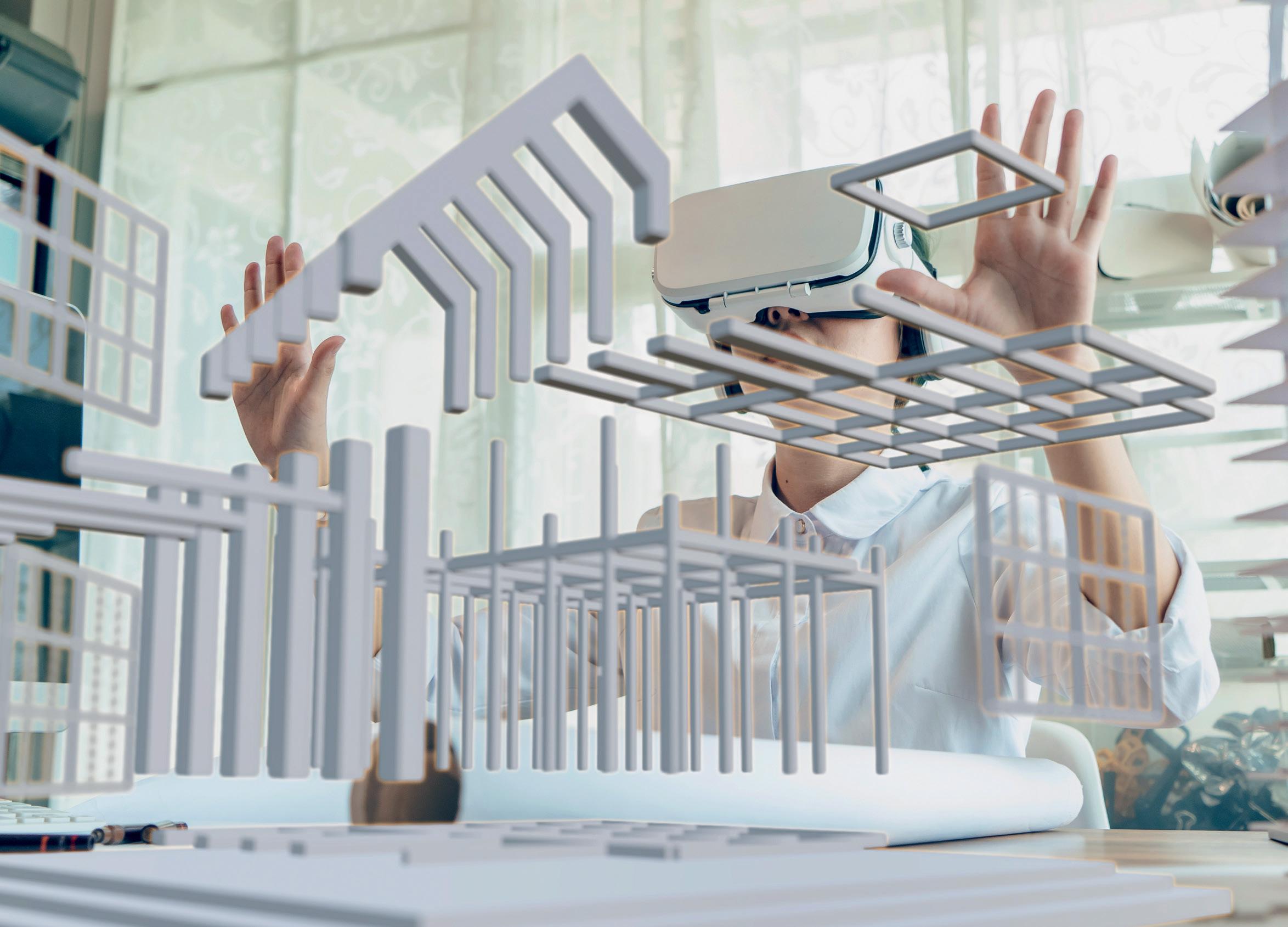
As the pace of construction soars across the GCC, traditional tools for collaboration such as physical models and drawings may no longer be able to meet business expectations paving the way for adoption of digital twins, explains Omnix International’s Walid Gomaa

Gomaa notes that a digital twin allows multiple teams to view, share, and collaborate at the same time on the engineering structure.
The arrival of digital twins in the architecture, engineering and construction (AEC) industry is part of the ongoing adoption of immersive digital technologies. The AEC industry has been using computer-aided 3D design for decades but digital transformation platforms and the arrival of visual tools such as augmented reality, extended reality and mixed reality have created revolutionary and highly collaborative workflows that allow for predictive results, with more efficiency and better productivity.
According to Meticulous Research, the global immersive technologies market is projected to reach $493.5bn by 2030, at a CAGR of 29.4% from 2024 to 2030. This is a faster clip than the global ICT industry. The growth of this market is forecasted partly due to the growing demand for 3D graphics and real-time 3D skills and the rising adoption of immersive technologies in architecture, engineering, and construction industry. Teams that function in the AEC industry do not work in isolation. They have to collaborate and deliver jointly on highly complex, capital intensive, long drawn out, and sometimes risky and innovative projects. The more collaborative the end-to-end
process is between the teams, the better and more predictable will be the final structural outcome.
Traditionally the architecture, engineering and construction industry has relied on computer screens using 2D and 3D software applications. 3D printed replicas, physical models using various materials and 2D drawings often do not present the full story of this complex journey. Also, the levels of design, technical and engineering skills vary diversely across these multifunctional teams. Ongoing adoption of such immersive processes like the digital twins shows 90% reduction in the time required to review designs.
According to the real-time 3D software company Mindesk, designers can spot more than 80% of the problems that usually go unnoticed when experiencing and modifying projects on a 1:1 scale in an immersive environment. This contrasts with reviewing a project on a 2D screen or surface.
For the AEC industry, a digital twin is a virtual representation of a physical structure or a sprawling infrastructure. It includes everything required for the end-to-end construction of the structure
ranging from architecture designs to engineering and structural plans to materials lists and project milestones. Most importantly, it integrates data from multiple sources including realtime onsite surveillance, drone footage, Internet of Things sensors, building management systems, ERP, other business applications, among others.
In short, the objective and purpose of the digital twin in the AEC industry, is to create a 100% digital and virtual replica of a living physical asset. This captures the entire gamut of data that represents the physical asset in real life, and feeds it into a virtual 3D representation, that can be viewed, shared and interacted with, across an entire team of nontechnical and technical stakeholders.
At this stage it would be important to make the distinction between Building Information Modelling or BIM and the digital twin. According to Autodesk, BIM is the holistic process of creating and managing information for a built asset. BIM integrates structured, multi-disciplinary data to produce a digital representation of an asset across its lifecycle, from planning and design to construction and operations. It can even exist before the physical structure has been built.
A digital twin on the other hand is everything that BIM is but is a mirror of the physical structure in near real time or is meant to be an as-is where-is representation of the physical structure. If the physical structure has been 10% built, the digital twin will be only 10% in shape. While designers and engineers may access BIM to see the full-blown planned version of the structure, BIM is not meant to tell them the status of the engineering and construction, on-ground as it is on-site. By converting a highly complex engineering and technical workflow
The more collaborative the end-toend process is between teams, the better and more predictable will be the final structural outcome.

from an offsite construction location to an onsite premises, brings with it a huge list of design and conceptual benefits, efficiency gains and various returns on investment. The following are some of the practical benefits of digital twins for the architecture, engineering and construction industry:
• A digital twin allows multiple teams to view, share, and collaborate at the same time on the engineering structure
• A digital twin allows all the teams to jointly collaborate on playing out various scenarios around design, engineering and timeline variable options
• At the design stage, a digital twin can help to identify the most efficient process for construction, especially for first time features and attributes
• Using near real-time and verified data, a digital twin helps engineers to make informed and intelligent decisions during the on-going construction phase
• The digital twin helps to identify upcoming potential risks and challenges during the construction phase
• The digital twin helps predictive maintenance and support teams to begin planning their takeover and handover process at an early date rather than waiting till the end of construction
• If during the construction phase there is a change of regulations, the impact of adhering to the new compliances can be simulated and visualized through the digital twin
• A digital twin boosts proactive problem solving, identification of process bottlenecks, continuous improvement, leading to
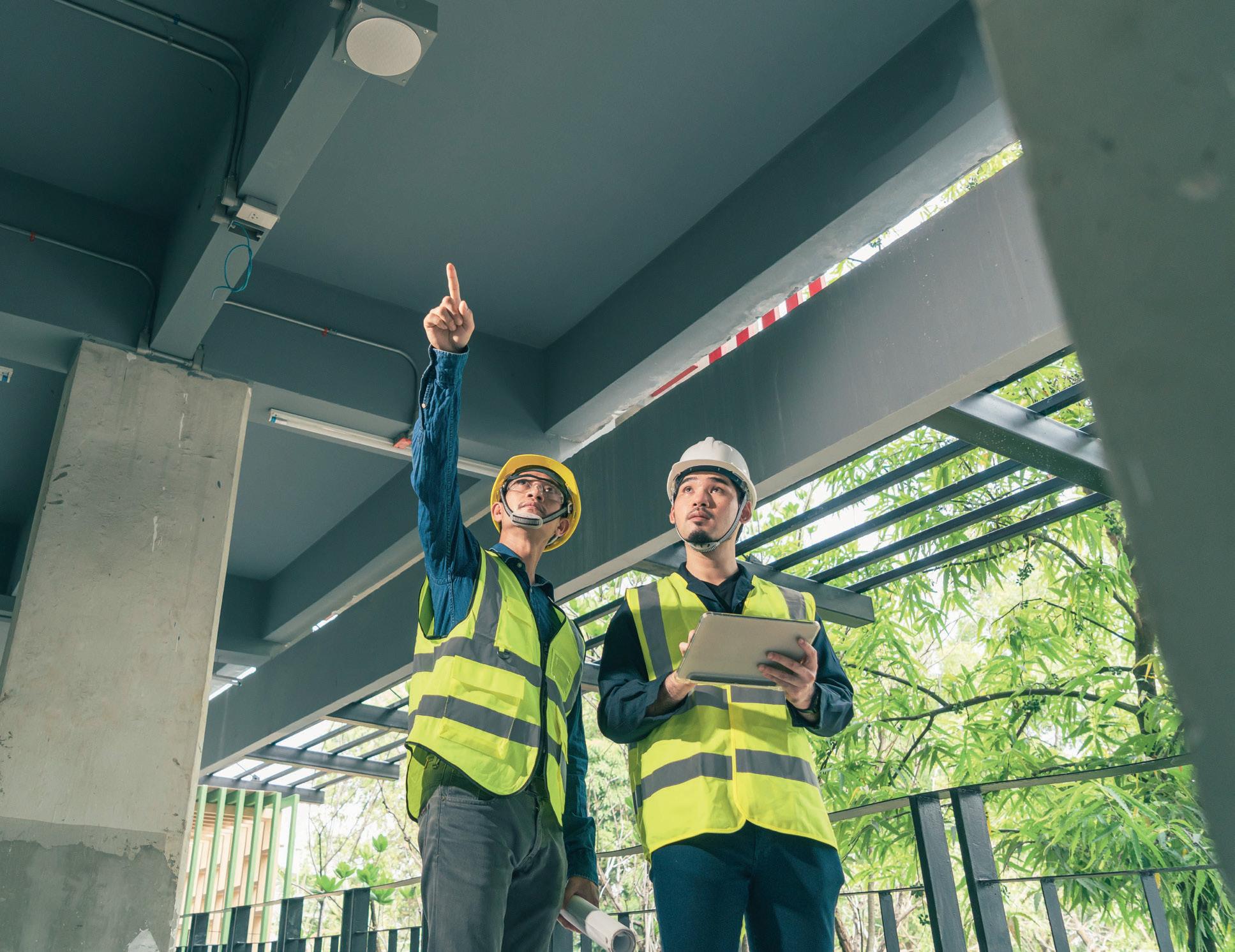
ENHANCING ONSITE PERFORMANCE
A digital twin boosts proactive problem solving, identification of process bottlenecks, continuous improvement, leading to enhanced onsite performance says Gomaa.
enhanced onsite performance
• By using collected and analysed data to address operational challenges, digital twins can accelerate the time to market for the construction
• By comparing actual onsite performance to planned design milestones, engineers can identify deviations, root causes issues, and correct the project to meet planned milestones
• Digital twins enhance data traceability, delivers better onsite management, promote better decision-making, and creates more accurate records of progress
• Using digital twins, there is
seamless data transfer from engineering to operations, data is continuously verified and is easily accessible to all stakeholders
• Digital twins minimise errors, improve communication, enables collaboration across all project phases
For the architecture, engineering and construction industry, key vendors offering digital twins and related software solutions should partner with specialised partners to leapfrog their capabilities.
Some of the key topics are: data management in construction; future trends and emerging technologies; connected construction, and resilience
Trimble has announced that the 2024 edition of its Connected Construction Conference will take place at the Museum of the Future, Dubai on 30 October.
The construction technology conference will explore how technological advancements are shaping and revolutionising the way the built environment thinks, plans and builds, Trimble confirmed.
Some of the key topics planned for the day are: data management in construction; future trends
and emerging technologies; connected construction; resilience and adaption challenges; digital transformation, and will explore how Dubai’s ambitious projects and cutting-edge practices are setting global benchmarks in construction innovation.
The conference will bring together over a dozen key personalities from across the regional built environment, in addition to senior figures from Trimble’s regional and global teams.
The event will be chaired by Paul Wallett, Regional Director for the Middle East at Trimble, with speakers from ALEC, AtkinsRealis, Buro Happold, Bureau Veritas, Group AMANA, Dubai Municipality, Ramboll Middle East, Turner Construction International, and others scheduled to participate. The event is free to attend for construction professionals, however registration is mandatory. The conference is expected to kick-off at 9am and conclude by 5pm.
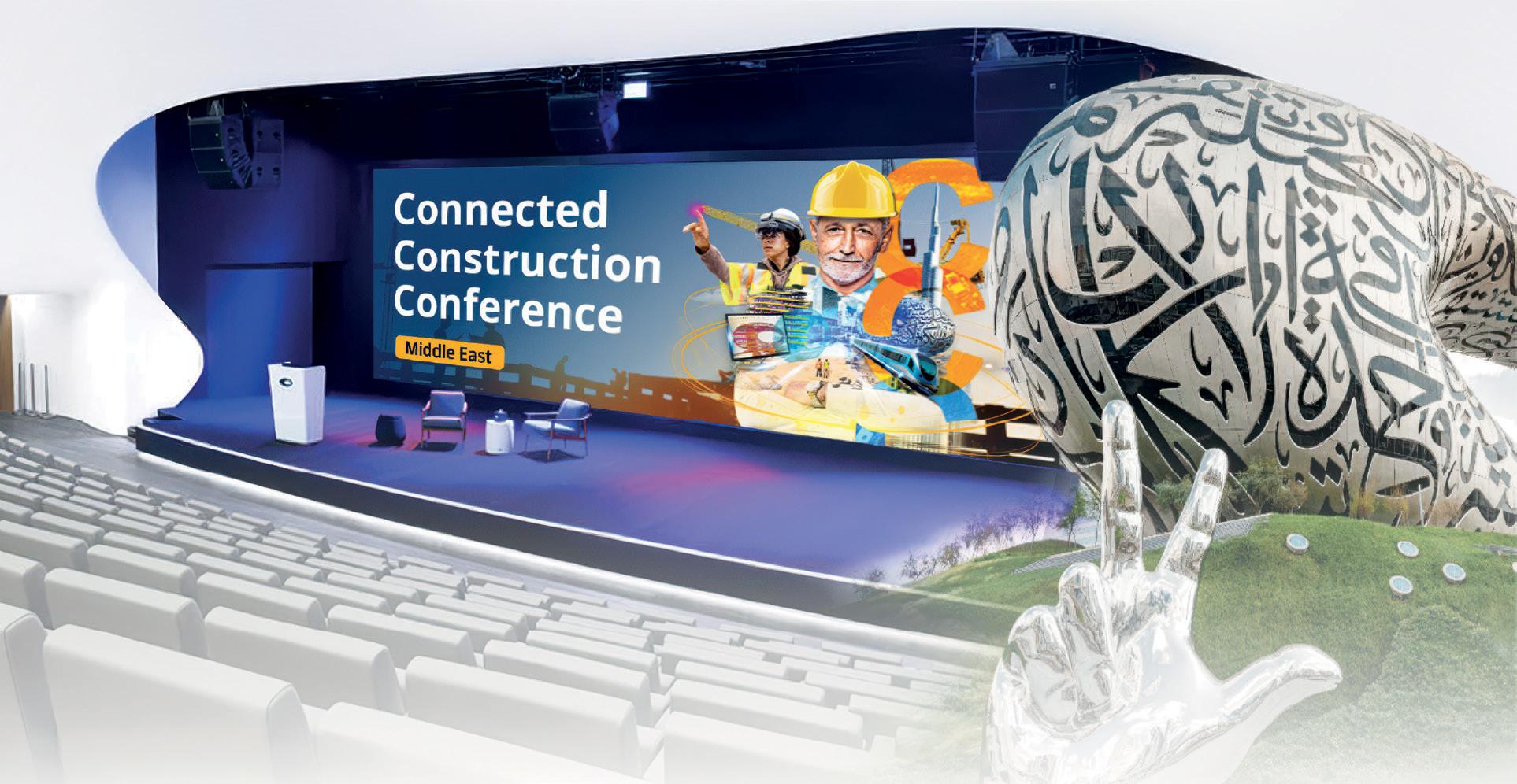
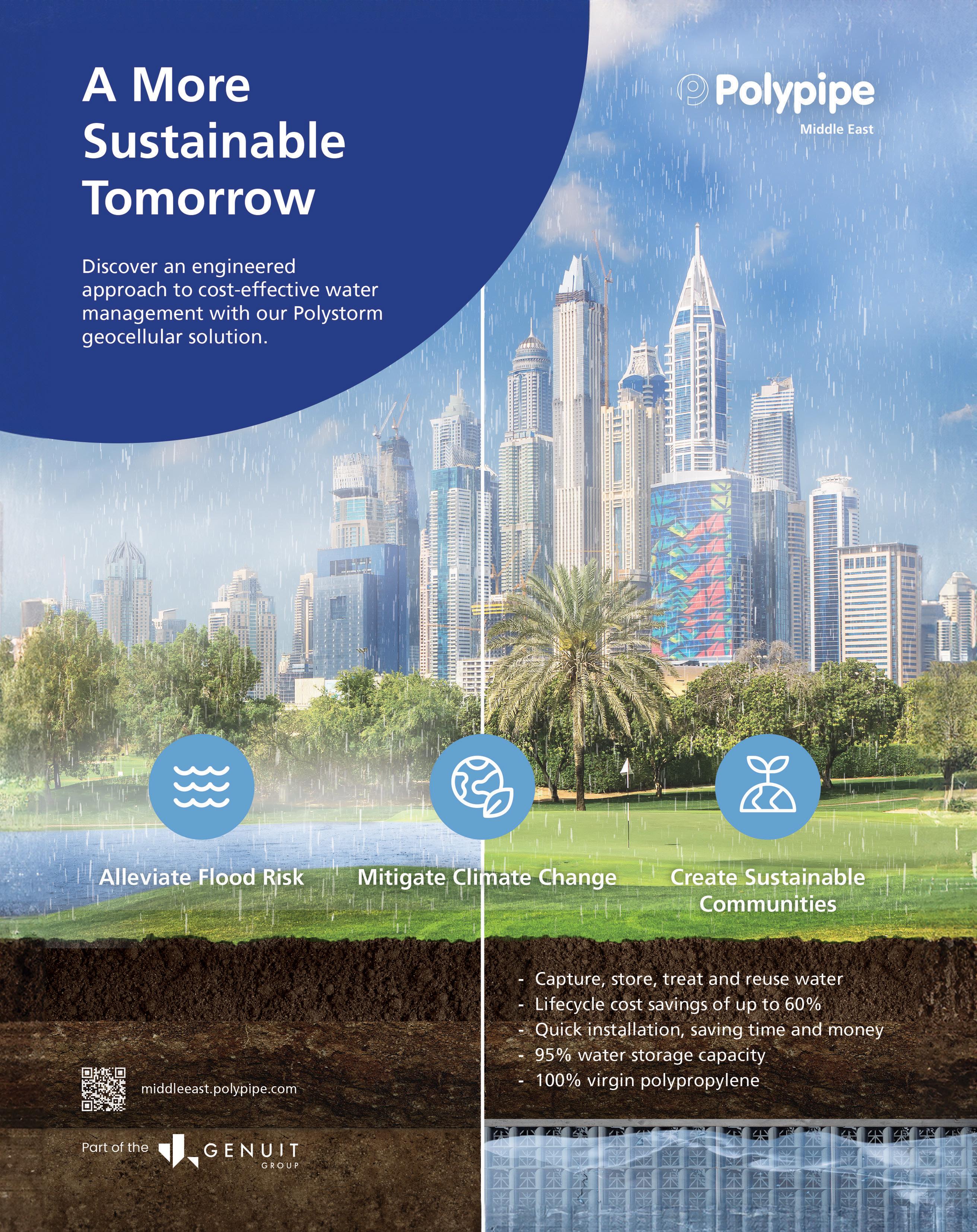
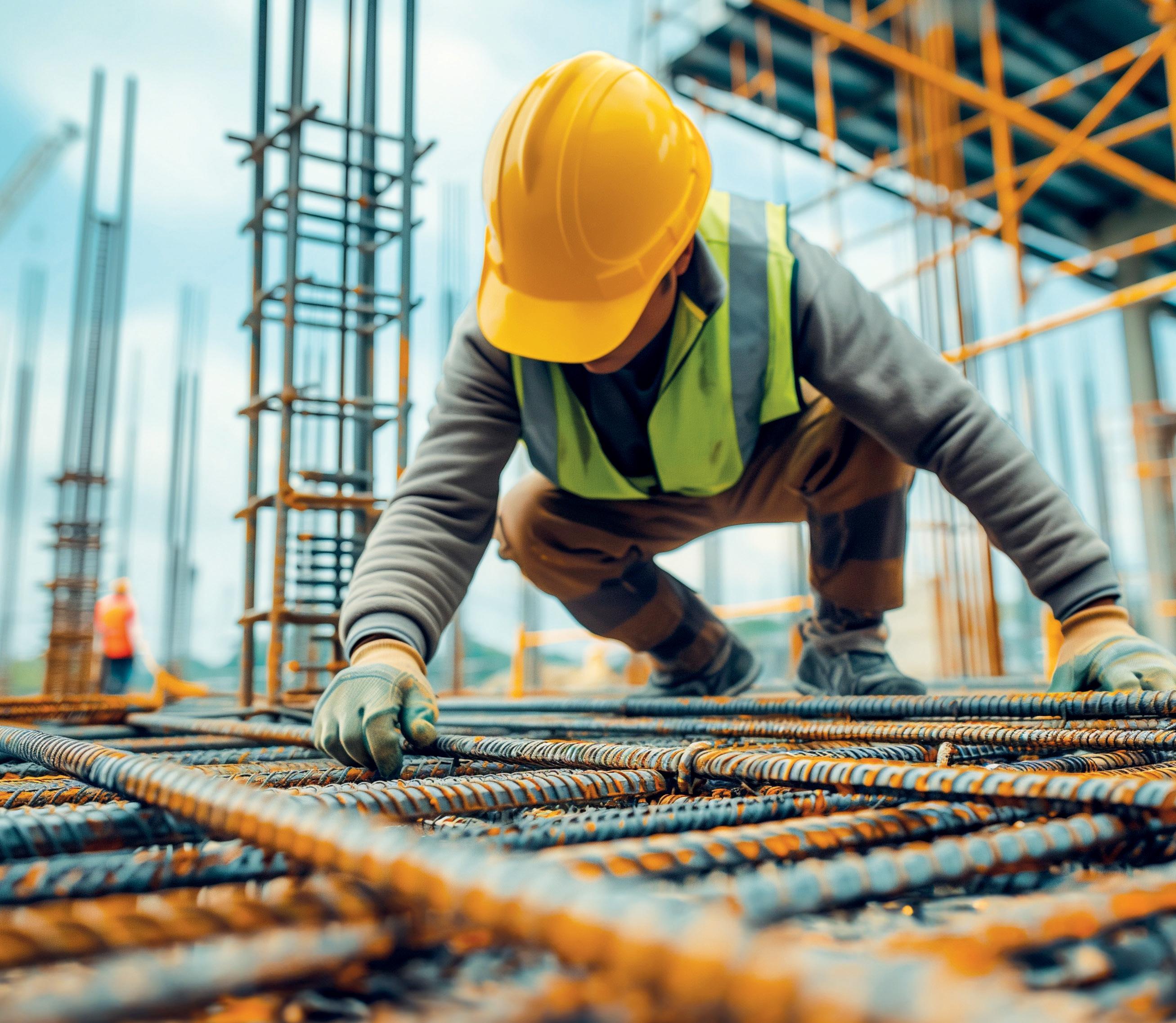
Trimble’s Paul Wallett highlights how architects and engineers can create better structure designs that lead to better outcomes
In the world of construction, the journey from concept to finished structure is intricate, requiring meticulous planning, coordination and execution. Owing to the nature of today’s buildings, complex building designs and its intricate construction processes, architects, engineers and designers frequently find themselves overwhelmed by client expectations, communication, contractor troubleshooting, as well as responding to RFIs (Request for Information), all of which hamper their creativity.
When architect’s vision meets engineer’s precision
While a building’s design, appeal and aesthetics fall under the major concerns of architects, structural engineers, on the other hand, are the masterminds behind the safety of a building, its durability, strength, stability, etc. Their primary responsibility includes ensuring that the design or ideas become a tangible structure.
There is certainly a lot of room for mistakes and misinterpretations in the engineering, fabrication, MEP design and detailing, and steel and concrete erection processes. The consequence or the burden of these issues frequently falls on structural engineers, who also face rising expenses due to waste and repeated efforts when plans or designs need to be revised or if mistakes cause time or material waste.
Throughout a building’s lifespan, close coordination between designers, architects and engineers is essential to avoiding rework. Taking small and doable actions early in a project can greatly lower the chance of mistakes and rework.
For example, during the layout process for a concrete slab, the team must mark locations for door block outs, corners, edges, steps, rebar, cages, anchor points, and MEP penetrations. Minor mistakes in these markings can cause significant issues. Discovering errors during the layout phase halts work for corrections, while overlooked mistakes lead to lengthy delays and costly rework.
Cutting-edge technologies for enhanced layouts and reduced construction errors
The way engineers and architects work and collaborate can be revolutionised by advanced software. It can ensure architectural concepts are transformed into standing structures without sacrificing quality of design, bridging the gap between creative vision and structural integrity.
Throughout a building’s lifespan, close coordination between designers, architects and engineers is essential to avoiding rework.
In relation to the above example, construction professionals can significantly increase the accuracy of layout work right from the outset by utilising cuttingedge technologies, such as cloud-based 3D modelling, BIM, 3D laser scanning, robotic total stations (RTS) and connected field link software. Cooperation and the exchange of information between structural professionals, their MEP counterparts, layout technicians and steel and concrete detailers can be improved by these technologies.
It is ideal to leverage cloud-based modelling software to enhance your current design processes and ensure that the whole team uses the same project model for design in order to minimise rework or revision. Furthermore, creating a common data environment and a single source of truth for all project documentation while also keeping all the project drawings, data and models accessible in one location, increases efficiency of operations.

This approach is increasingly utilised in major projects today. NEOM, the futuristic city in Saudi Arabia, is being built with the latest technological innovations to become one of the most advanced cities in the world. These examples demonstrate how technology can revolutionise modern construction, leading to innovative and environmentalfriendly buildings and designs.
Architects and engineers play an instrumental role in shaping the built environment. By fostering robust collaboration, incorporating innovative design elements and deploying cuttingedge technologies, they can create structures that are both functional and aesthetically pleasing.
Paul Wallett is Regional Director of Trimble Solutions Middle East.

Why Saudi Arabia needs to adopt a dual approach to enhance climate resilience
Through advanced pump solutions and water technology, it’s possible to significantly enhance Saudi Arabia's climate resilience says Grundfos’ Abdulaziz Daghestani
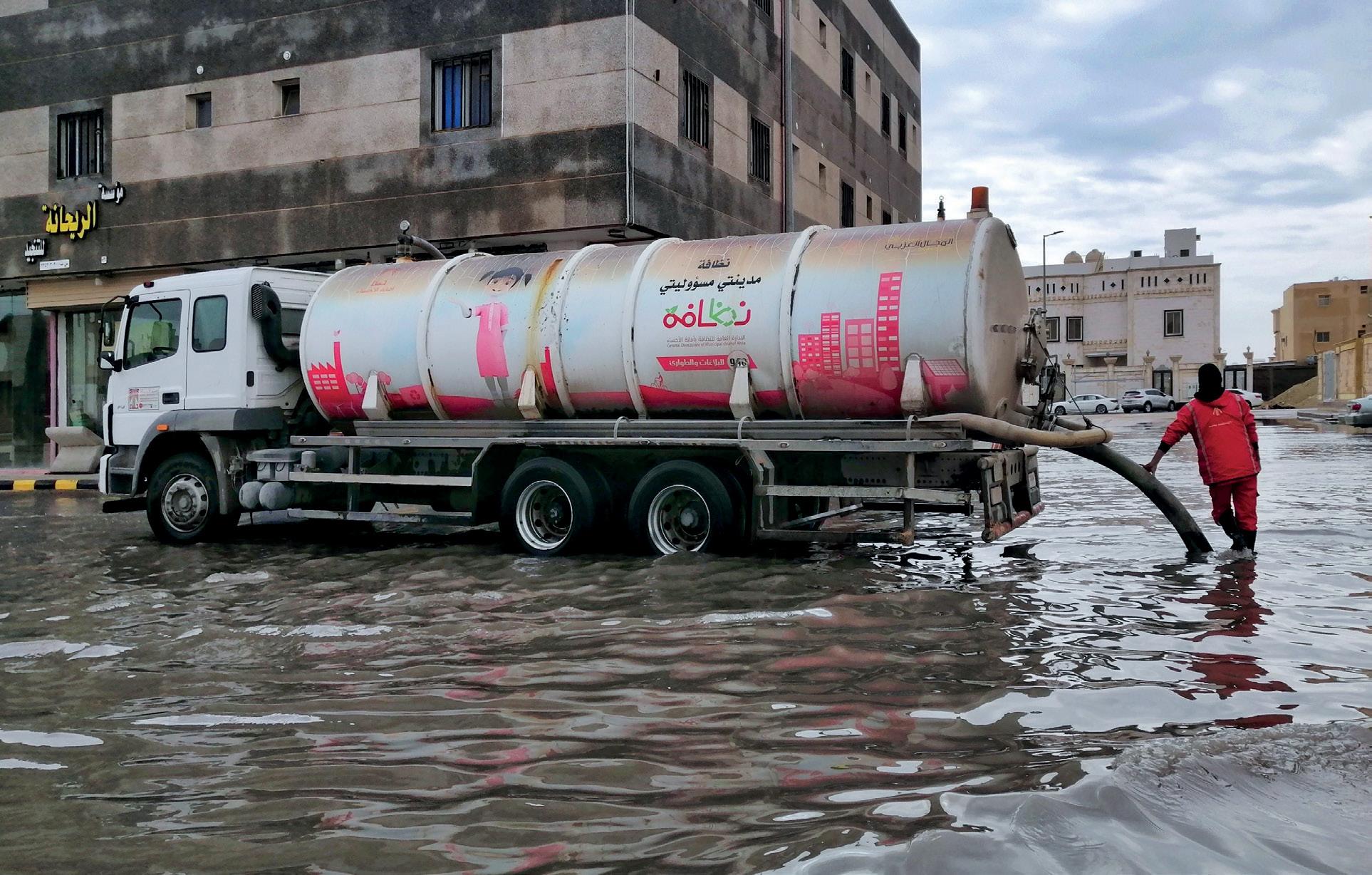
In recent years, Saudi Arabia has faced escalating challenges from climate change, exacerbated by increased flooding due to rapid urbanisation and extreme weather events. These environmental pressures have highlighted the urgent need for the Kingdom to bolster its infrastructure, safeguard communities, and protect its economy from mounting risks. However, the immediate upgrades required for national infrastructure demand significant investments of time and resources. To effectively tackle these pressing issues, a strategic approach is essential. This approach must incorporate collaborative efforts between government leadership and innovative private sector solutions, while promoting sustainable practices. This dual approach will enhance Saudi Arabia's climate resilience and align with the ambitious goals of Vision 2030.
Due to Saudi Arabia's geographical diversity, achieving efficient resource allocation and ensuring precise data management is challenging. Flood vulnerability, especially in urban areas like Riyadh and Jeddah, necessitates substantial drainage and flood protection infrastructure investments. However, competing budgetary needs, such as healthcare, education, and economic diversification, often limit funds available for these climate-resilience projects. Additionally, managing large volumes of climate-related data and establishing comprehensive, standardised data collection methodologies across diverse regions is a common challenge many countries, including Saudi Arabia face. This complexity arises from the Kingdom's varied climates and landscapes, making
IMPORTANT INFRASTRUCTURE
Balancing immediate and long-term infrastructure needs is crucial for sustainable development in the Kingdom.
The severe floods in Jeddah, Mecca, and Medina in late 2022 and early 2023 highlighted the consequences of inadequate infrastructure maintenance says Daghestani.
consistent data collection and analysis difficult. Thus, it hinders proactive responses to climate challenges and resilience improvement nationwide.
Balancing immediate and longterm infrastructure needs is crucial for sustainable development. Addressing both aspects ensures that communities are protected now, while being resilient in the future.
Immediate needs include short-term upgrades like reinforcing flood defenses and upgrading drainage systems to address current vulnerabilities and protect
communities from imminent threats. These measures mitigate the immediate impacts of climate change and safeguard public safety.
In parallel, long-term needs focus on sustainable practices that enhance future resilience and environmental sustainability, such as developing green infrastructure, implementing renewable energy projects, and establishing comprehensive water management systems. These investments aim to reduce reliance on non-renewable resources and ensure the Kingdom's sustainability amid ongoing climate change.
However, a delicate balance is needed to ensure effective flood control measures while aligning with the overarching objectives outlined in Vision 2030. We can

create robust infrastructure that meets both present and future demands by effectively managing competing needs and prioritising resource allocation between immediate fixes and long-term solutions.
Although Saudi Arabia’s General Authority of Meteorology and Environmental Protection has abundant data on factors contributing to flood vulnerabilities, such as precipitation patterns and land use changes, translating this data into actionable decisions is a huge challenge. To enhance the existing regulatory framework, the regulatory bodies need to refine the guidelines for data analysis and interpretation and implement more robust decision-making mechanisms.
It is also essential to look at successful models from other regions and incorporate best practices into Saudi Arabia's system. For instance, implementing the sponge city model like the one in China, which focuses on using natural systems to absorb, store, and purify rainwater, could significantly help mitigate flood risks in urban areas. This approach reduces runoff, enhances groundwater recharge, and improves urban resilience to extreme rainfall events.
Moreover, the country would also benefit from creating an environment conducive to innovation and adaptation, where emerging technologies and best practices worldwide can seamlessly integrate into Saudi Arabia's flood risk management. Integrating such innovative approaches into Saudi Arabia's flood management strategies can enhance sustainability and reduce reliance on traditional engineering solutions.
Lifecycle management also plays a critical role in ensuring the sustainability and resilience of infrastructure against
Due to Saudi Arabia's geographical diversity, achieving efficient resource allocation and ensuring precise data management is challenging.
flooding. However, several challenges exist, including maintaining infrastructure integrity, implementing effective maintenance practices, and planning for long-term sustainability. The risks of failure and reduced performance increase as infrastructure ages, necessitating proactive measures to address wear and tear. Because of this, regular inspections and timely repairs are essential to prevent minor issues from escalating into major problems.

For example, the severe floods in Jeddah, Mecca, and Medina in late 2022 and early 2023 highlighted the consequences of inadequate infrastructure maintenance. The heavy rains caused significant disruption, including road closures, flight delays and property damage, emphasising the importance of robust lifecycle management. By adopting advanced lifecycle management practices more broadly, Saudi Arabia can further enhance the sustainability and resilience of its infrastructure, ensuring long-term protection against environmental threats. Through advanced pump solutions and water technology, it’s possible to significantly enhance Saudi Arabia's climate resilience. Innovative products and expertise in flood management, water supply, and drainage systems can provide essential support for the Kingdom's infrastructure, helping to mitigate the impacts of climate change and ensure sustainable development. By integrating innovative approaches and cutting-edge technologies, Saudi Arabia is poised to build a resilient foundation that ensures its communities' safety, prosperity, and sustainable development in the face of climate change.
Abdulaziz Daghestani is Area Sales Director, Water Utilities, MENA and Country Director for Saudi Arabia at Grundfos.
Iman Developers has said that it has begun handovers of units at Oxford Terraces, a luxury apartment complex located in Jumeirah Village Circle (JVC).
Valued at US $19.6mn, construction of the residential project began in 2022 and includes 117 units comprising a diverse mix of 58 studios, 51 onebedroom apartments, and eight two-bedroom apartments. It was designed to offer residents a blend of modern design and functional living spaces, catering to the needs of contemporary urban lifestyles. The project encompasses a plot size of 30,000sqft with a landscaped area of 17,000sqft.
“The handover of Oxford Terraces is a momentous occasion for Iman Developers. This project
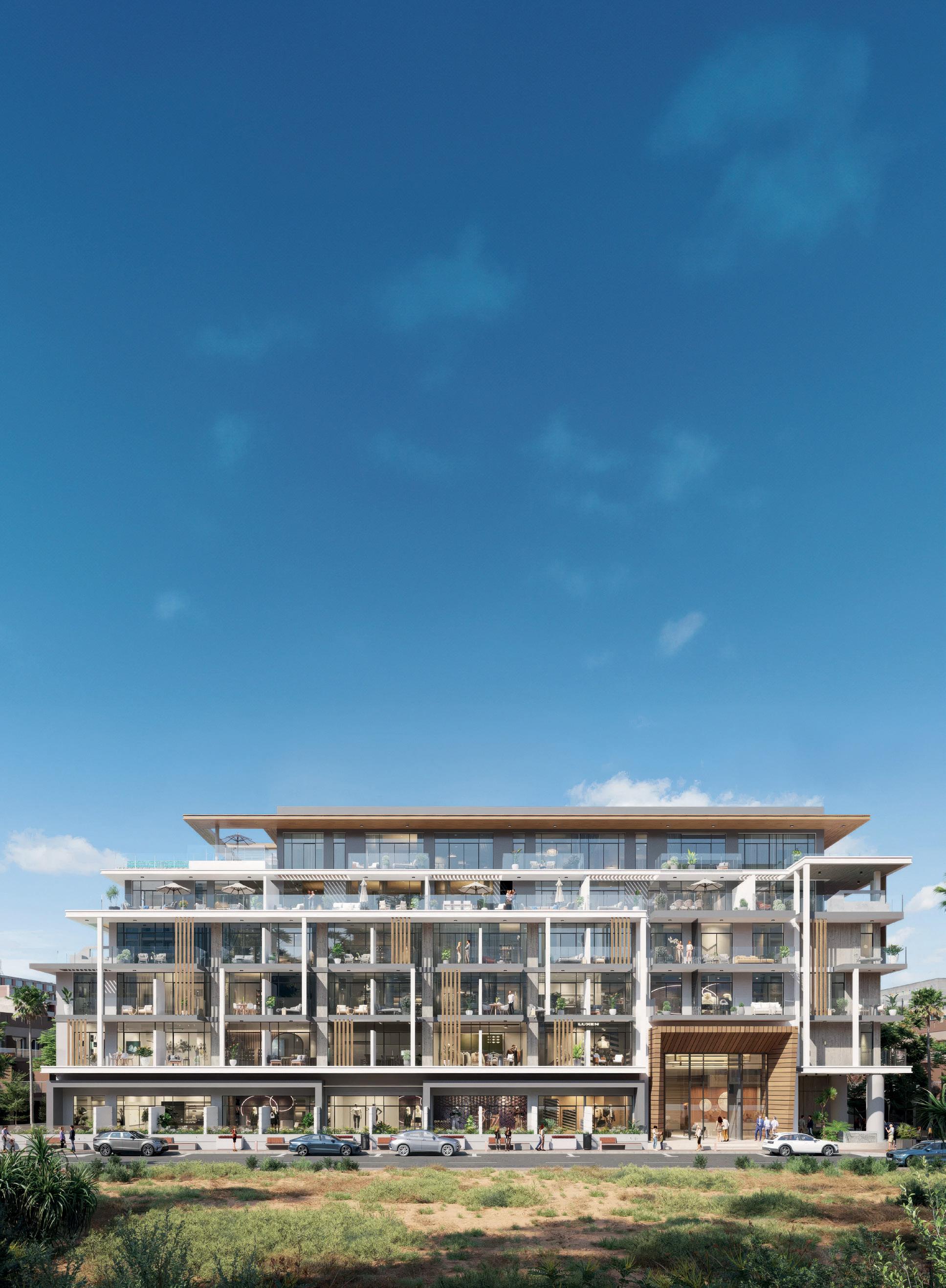
exemplifies our commitment to innovation, sustainability, and the creation of exceptional living spaces. The phenomenal response we have received underscores our dedication to these principles, and we are confident that Oxford Terraces will offer residents a unique and enriching living experience that aligns with our core values and long-term vision,” stated Ismail Marfani, Chief Executive Officer of Iman Developers.
“Oxford Terraces has proven to be a remarkable investment for our buyers. Despite being initially priced above the market average due to its superior community living features and high-quality finishes, the value of these units has appreciated significantly. This
substantial increase demonstrates the robust return on investment and the enduring appeal of our developments,” he added.
In line with Iman Developers’ commitment to sustainability, Oxford Terraces incorporates green building initiatives that minimise environmental impact and promote energy efficiency. The landscape areas are designed to enhance aesthetic appeal while providing serene spaces for relaxation. Additionally, residents can enjoy a variety of recreational facilities, including a rooftop infinity pool, leisure pool, yoga and gym area. These amenities cater to diverse lifestyle needs, ensuring that every resident enjoys a well-rounded and fulfilling living experience, the firm noted.






